Will Pfeifer's Blog, page 11
June 8, 2017
Movies I Watched in May, Part 1
Here's part one of the May recap, but be warned -- there are some spoilers ahead, especially in the "Guardians of the Galaxy" section.
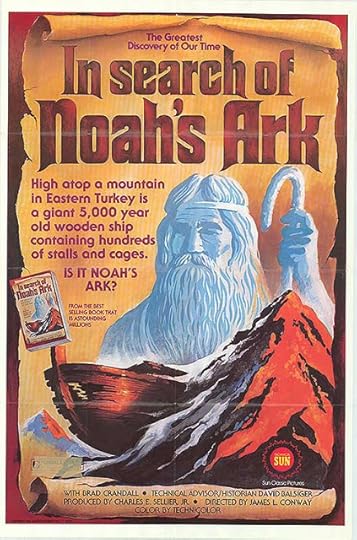
Watched this bit of 1976 vintage nonsense as research for an upcoming comic book project, and though I didn’t believe a word of it, I have to admit I found it very entertaining. There’s something about a cheap, 1970s “documentary,” full of guys in big ties and rooms full of reel-tape computers that really hits my sweet spot. Obviously, Noah’s Ark is a Sunday school fairy tale that takes the flood myth of every ancient civilization and turns it into a morality story, but this movie takes such giant leaps of logic trying to prove it’s “true” that I had to give in and just admire the balls of the whole enterprise. Even with a chimp inserted to provide forced comic relief and some very suspect-looking “scientists” puttering in the background with test tubes and Bunsen burners, my favorite bit in the whole film is a bizarre story about angry atheists who tried to chop up the ark, kill their guides and make them sign a blood oath not to reveal the truth. Now that’s a movie I’d like to see!
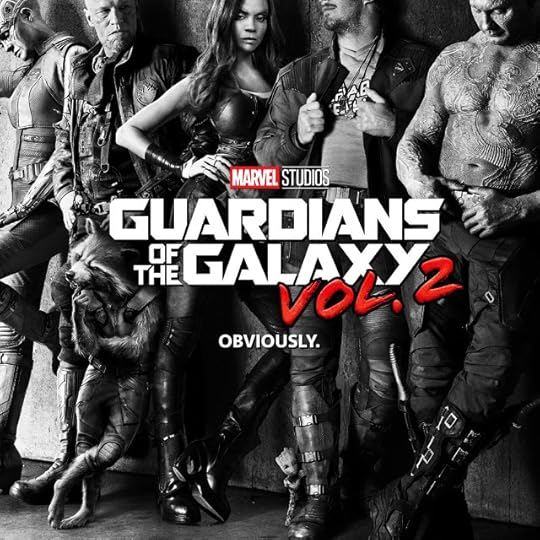
Hell, I loved it – possibly as much as the original. For one thing, though I’ve come to enjoy Lee Pace’s Ronan during my many (many, many) viewings of “Guardians,” Kurt Russell takes things to another level as Ego, bringing all his charm and bravado to the role. (And how great was it seeing vintage Kurt Russell in the opening scene?) But even better was Michael Rooker’s Yondu, building on the glimpses of humanity we saw in the original to become a full-fledged character with an actual (and – spoilers – heartbreaking) arc. His scenes were my favorite in the movie, from taking out an entire spaceship crew with that arrow thing of his to showing Peter Quill what a father really is. I hate to admit it, but I got a little misty at the ending, specifically when Sean Gunn’s Kraglin cheered at seeing the Ravagers show up to salute his old boss. (Trivia note: Sean Gunn is not only the brother of director James Gunn but also the on-set actor for Rocket.) I think what I really love about the “Guardians” movies – and I do love them, actually a lot more than the new “Star Wars” movies, in fact – is that everything seems fully realized and fleshed out, like we’re stepping into worlds and meeting characters who existed before we showed up. It hit me during this movie in the early scene where Stallone’s Stakar Ogord confronted Yondu in the Reno-like city on the snowy planet. I don’t know what that planet was called, but even though it only got a few minutes of screen time, it felt complete, from the light snow falling to the obvious (but never specified) pleasure robots. And the whole movie is like that. I can’t wait to see it again.
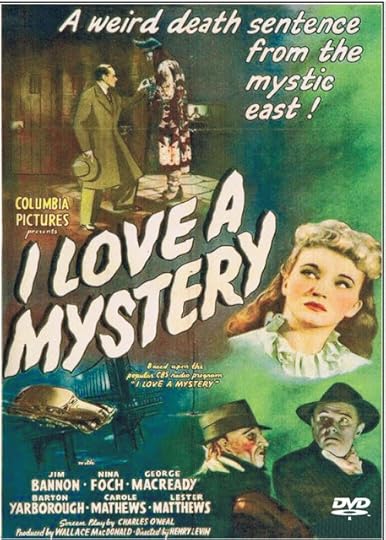
As I’ve said before, the reason I love Turner Classic Movies isn’t because of its frequent airings of classics like “Casablanca” and “Citizen Kane” (as great as those movies are). No, it’s because in its endless quest to fill 24 hours of airtime 365 days, TCM winds up showing all kinds of obscure oddities that would otherwise never see the light of day. Case in point, this 1945 B-movie based on a then-popular radio show. I have a real soft spot for this sort of thing, a well-produced, low-budget fairly clever mystery with a few interesting twists and a solid cast. In this one, our two heroes (Jim Bannon and Barton Yarborough) stumble onto the case of a man (George MacReady) who has been told he’s going to die in three days. The surprisingly convoluted story involves a Russian nightclub, a secret “Far Eastern” society, a femme fatale, a man with a peg leg, and an offer to purchase MacReady’s head for $10,000. It’s a lot of nonsense, obviously, but a lot of fun, too. One word of advice to people casting movies 72 years ago, though: Don’t hire George MacReady to play a supposedly “innocent” victim – the heel turn will be obvious from the get-go because he’s got such a weaselly screen presence. I also DVR’d another in the “I Love a Mystery” series, “The Devil’s Mask” (previouslyreviewed here), and I can’t wait to watch it late some night.
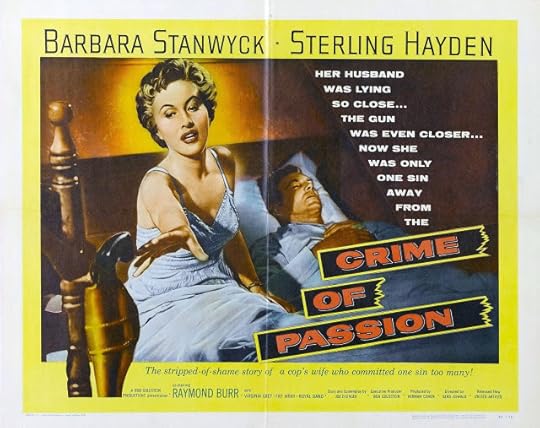
Speaking of TCM (as I often do in this blog, for obvious reasons), the channel has recently added “Noir Alley” to its Sunday morning lineup with noir expert Eddie Muller offering expert intros to classic films. A couple weeks back they aired this Barbara Stanwyck drama from 1957, something that was probably called “a woman’s picture” when it was released but fits quite nicely into the noir category with 60 years of hindsight. It’s low-key but powerful, a portrait of a tough newspaper woman forced into the bland, stifling role of a ‘50s housewife when she married a kind but unambitious detective (Sterling Hayden). Stanwyck, possibly my favorite all-time actress, is very good here, becoming gradually unhinged as she tries increasingly desperate measures to orchestrate her husband’s rise up the department ranks. My favorite scene in the whole movie comes during a party when the wives are in one room having an inane (bordering on surreal) discussion of party snacks while the husbands are in another room drinking and playing cards. Stanwyck is literally almost driven insane by the drivel the wives are spouting, but when she tries to talk to the husbands like she used to talk to the guys in the newsroom, it’s clear that her place (at least in their minds) is in the kitchen. No wonder she eventually resorts to murder.
Coming up: George C. Scott descends into the world of adult films, Michael Keaton buys McDonalds and Al Jolson does what Al Jolson usually does, unfortunately.

Watched this bit of 1976 vintage nonsense as research for an upcoming comic book project, and though I didn’t believe a word of it, I have to admit I found it very entertaining. There’s something about a cheap, 1970s “documentary,” full of guys in big ties and rooms full of reel-tape computers that really hits my sweet spot. Obviously, Noah’s Ark is a Sunday school fairy tale that takes the flood myth of every ancient civilization and turns it into a morality story, but this movie takes such giant leaps of logic trying to prove it’s “true” that I had to give in and just admire the balls of the whole enterprise. Even with a chimp inserted to provide forced comic relief and some very suspect-looking “scientists” puttering in the background with test tubes and Bunsen burners, my favorite bit in the whole film is a bizarre story about angry atheists who tried to chop up the ark, kill their guides and make them sign a blood oath not to reveal the truth. Now that’s a movie I’d like to see!

Hell, I loved it – possibly as much as the original. For one thing, though I’ve come to enjoy Lee Pace’s Ronan during my many (many, many) viewings of “Guardians,” Kurt Russell takes things to another level as Ego, bringing all his charm and bravado to the role. (And how great was it seeing vintage Kurt Russell in the opening scene?) But even better was Michael Rooker’s Yondu, building on the glimpses of humanity we saw in the original to become a full-fledged character with an actual (and – spoilers – heartbreaking) arc. His scenes were my favorite in the movie, from taking out an entire spaceship crew with that arrow thing of his to showing Peter Quill what a father really is. I hate to admit it, but I got a little misty at the ending, specifically when Sean Gunn’s Kraglin cheered at seeing the Ravagers show up to salute his old boss. (Trivia note: Sean Gunn is not only the brother of director James Gunn but also the on-set actor for Rocket.) I think what I really love about the “Guardians” movies – and I do love them, actually a lot more than the new “Star Wars” movies, in fact – is that everything seems fully realized and fleshed out, like we’re stepping into worlds and meeting characters who existed before we showed up. It hit me during this movie in the early scene where Stallone’s Stakar Ogord confronted Yondu in the Reno-like city on the snowy planet. I don’t know what that planet was called, but even though it only got a few minutes of screen time, it felt complete, from the light snow falling to the obvious (but never specified) pleasure robots. And the whole movie is like that. I can’t wait to see it again.

As I’ve said before, the reason I love Turner Classic Movies isn’t because of its frequent airings of classics like “Casablanca” and “Citizen Kane” (as great as those movies are). No, it’s because in its endless quest to fill 24 hours of airtime 365 days, TCM winds up showing all kinds of obscure oddities that would otherwise never see the light of day. Case in point, this 1945 B-movie based on a then-popular radio show. I have a real soft spot for this sort of thing, a well-produced, low-budget fairly clever mystery with a few interesting twists and a solid cast. In this one, our two heroes (Jim Bannon and Barton Yarborough) stumble onto the case of a man (George MacReady) who has been told he’s going to die in three days. The surprisingly convoluted story involves a Russian nightclub, a secret “Far Eastern” society, a femme fatale, a man with a peg leg, and an offer to purchase MacReady’s head for $10,000. It’s a lot of nonsense, obviously, but a lot of fun, too. One word of advice to people casting movies 72 years ago, though: Don’t hire George MacReady to play a supposedly “innocent” victim – the heel turn will be obvious from the get-go because he’s got such a weaselly screen presence. I also DVR’d another in the “I Love a Mystery” series, “The Devil’s Mask” (previouslyreviewed here), and I can’t wait to watch it late some night.

Speaking of TCM (as I often do in this blog, for obvious reasons), the channel has recently added “Noir Alley” to its Sunday morning lineup with noir expert Eddie Muller offering expert intros to classic films. A couple weeks back they aired this Barbara Stanwyck drama from 1957, something that was probably called “a woman’s picture” when it was released but fits quite nicely into the noir category with 60 years of hindsight. It’s low-key but powerful, a portrait of a tough newspaper woman forced into the bland, stifling role of a ‘50s housewife when she married a kind but unambitious detective (Sterling Hayden). Stanwyck, possibly my favorite all-time actress, is very good here, becoming gradually unhinged as she tries increasingly desperate measures to orchestrate her husband’s rise up the department ranks. My favorite scene in the whole movie comes during a party when the wives are in one room having an inane (bordering on surreal) discussion of party snacks while the husbands are in another room drinking and playing cards. Stanwyck is literally almost driven insane by the drivel the wives are spouting, but when she tries to talk to the husbands like she used to talk to the guys in the newsroom, it’s clear that her place (at least in their minds) is in the kitchen. No wonder she eventually resorts to murder.
Coming up: George C. Scott descends into the world of adult films, Michael Keaton buys McDonalds and Al Jolson does what Al Jolson usually does, unfortunately.
Published on June 08, 2017 19:35
May 24, 2017
Here's why that new 'Battle of the Network Stars' can't work
Apparently, a commercial aired on the most recent episode of “Dancing with the Stars” hyping the upcoming return of the beloved (by me at least) TV show “Battle of the Network Stars.” Because “Dancing with the Stars” is a show I do not – and never, ever will – watch, I did not see this ad. (Several friends, knowing my love for the original "Battle," alerted me to its presence.) But, even though I know none of the specifics of the “Battle of the Network Stars” reboot, I feel confident in stating that it has exactly zero chance of being good, let alone reaching the glorious heights of the original. I feel qualified to make such an argument because (a) I’m the proud owner of a bootleg set of “Battle of the Network Stars” DVDs and (b) I’ve watched them all. More than once.
By the way, I deliberately didn’t want to make this yet another cranky Gen-X diatribe and say “all the good TV stars are dead or too old.” Sure, I love the original shows because folks like Telly Savalas, Lee Majors, Lynda Carter, Erin Gray and Fred “Rerun” Berry are in their prime, but there are plenty of actors and actresses who would be fun to watch these days – probably more, in fact. (And I'd be willing to bet that Mark Harmon, who dominated in the '80s as a cast member of "St. Elsewhere," would still be pretty formidable 30-odd years later.)
However, having said that, there is one loss that cannot be overcome:
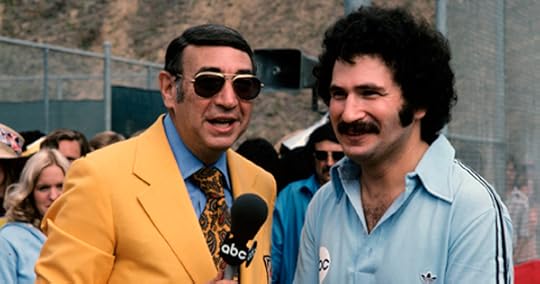
1. Howard Cosell is dead. This is the big one. The legendary sportscaster wasn’t just the announcer for the original "Battle of the Network Stars," he was its heart and soul. Sprinkling fifty-dollar words into descriptions of Ann Jillian getting stuck in a kayak, he was able to lift this cheap, cheesy competition to Olympic levels. What’s more, he was in on the joke. A modern host – any modern host – would be unable to resist constantly winking to the audience. But not Cosell. I can’t understand how he resisted over all those episodes, but I’m grateful he did. (For more on this topic, see Reason 4.) Cosell's passing alone is enough to guarantee any reboot, no matter who the host is, could never equal the original. Don’t believe me? Watch the 1985 edition of the show, when Dick Van Dyke stepped in. Van Dyke is a showbiz legend, but even he didn’t have Cosell’s special spark or willingness to leer over the female athletes. Which brings me to…
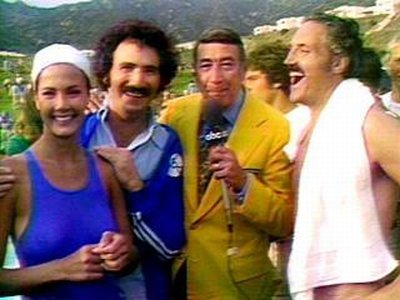
2. All that vintage sexism just won’t fly these days: Let’s be honest: The entire reason this stupid (glorious, life-affirming) show ever landed a timeslot in the first place was that it was conceived during the golden age of so-called “Jiggle TV,” when “Charlie’s Angels” and “Three’s Company” (both ABC shows, just like “Battle”) earned big ratings by tailoring plots to show the maximum amount of female flesh, preferably in motion. “Battle of the Network Stars” merely eliminated the need for a plot, putting those female stars in tight, revealing outfits and using any excuse to get them wet. (Why else, in the midst of actual semi-athletic events, did they make sure to include a dunk tank segment?) If you’ve only seen the edited versions of “Battle” on ESPN Classic, you haven’t seen how far the show was willing to go – there are “biographical” segments on actresses like Lynda Carter, where Cosell’s narration focuses almost entirely on her physical attributes, and much of the footage featured Carter (no joke) jumping on a trampoline. Whether you find this sort of thing appalling or hilarious, one thing’s for sure: There’s going to be nothing like it in a 21st century “Battle.” That may be a positive thing in the big-picture, good-for-society-as-a-whole sense, but dated elements like this are what made the original “Battle” a unique – and uniquely ‘70s – experience. And they're why the show is so fascinating to watch these days.
3. The financial incentive for all-out competition won't be there: There’s no shortage of actors and actresses competing in events on TV, like “Celebrity Jeopardy" and “Chopped All-Stars,” but being rich celebrities, their possible winnings are earmarked for favorite charities. I’m all for helping others, but one of the strange charms of the original “Battle of the Network Stars” was knowing those stars were playing for real money that they would take home -- members of the winning team got $20,000 each, which was no small payday for, say, the fourth-billed brother on a “Dallas” spinoff. That financial incentive led to a certain determination to win that today’s celebrity competitions just can’t match. And I'm damn sure that any modern version of the show will have every dime of the winnings earmarked some some worthwhile charity. Good for humanity, bad for entertainment.
4. Everything is a joke these days: This might sound hypocritical coming from a guy with the word “smartass” in his Twitter bio, but any modern take on “Battle of the Network Stars” is going to be fueled by a certain wink-wink, nudge-nudge snark on the part of not just the host (see Reason #1) but everyone involved. The original celebs certainly knew the whole show was a joke, but they mostly played it straight and never tried to make the whole thing “meta.” In fact, they seemed to take the actual competition seriously (see Reason 3), making a concerted effort to defeat their fellow celebs. And some of them took it VERY seriously: In a legendary moment from the very first “Battle,” CBS coach Telly Savalas protested the relay because he claimed the NBC team (led by TV tough guy Robert Conrad) cheated in the handing off of the baton. After a heated argument (at least on the part of Conrad), it was determined that special race would be run to settle matters, and pudgy ABC team captain Gabe Kaplan surprised everyone by destroying lean, mean Robert Conrad on the track. Everyone, including Howard Cosell and CBS team captain Telly Savalas, had a good laugh over this. Everyone, that is, except Conrad, who was still obviously pissed. I just can’t see the self-aware, too-cool-for-school stars of today having the same dedication to winning, or be as willing to look like jerks on camera. (I’ll talk more about the Conrad-Kaplan-Savalas argument in Reason 6 – it really is one of the greatest things ever to happen on ‘70s TV -- but in the meantime, you can watch the whole thing here.)
5. There are just too many networks: Or at least channels. Back in the day, there were three networks, which guaranteed the competition was easy to keep track of. (Even when, for example, in 1981 when ABC stalwart Gabe Kaplan competed on the NBC team during the run of his forgotten post-“Kotter” show, “Lewis & Clark,” it was easy to remember who was who.) Sure, PBS was also around in those pre-cable days, but they were too classy for this sort of lowbrow nonsense, a concept brilliantly spoofed in this SCTV segment:
But nowadays, with all three networks still hanging in there, plus Fox, FX, AMC, HBO, Showtime, Cinemax, TBS, Nick at Nite, Netflix, Hulu, the new streaming services that have sprung up since I typed the last sentence and whatever idiots your kids are making famous on You Tube, it’s just too much. It’s great to be living in the age of Peak TV, and sure I’d love to see Jon Hamm, David Lynch, Charlie Day, Carrie Coon, the cast of “Game of Thrones” and Larry David compete for the title, but the logistics would be a nightmare. Every episode of the original “Battle of the Network Stars” ended with a tug of war, which rewarded the audience with entertaining footage of TV stars in what appeared to be actual pain and discomfort. But a rope only has two ends. How many round of elimination are we going to have to sit through to get down to two teams?
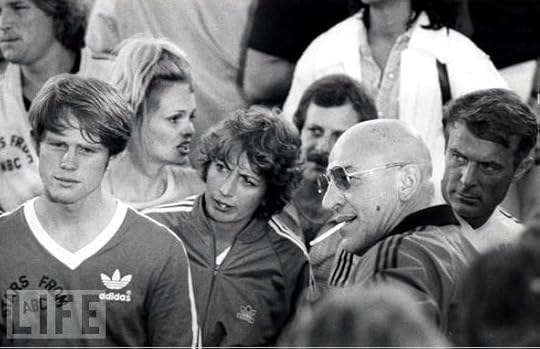
6. It’s a different time, man: Let me share something was said during the first “Battle of the Network Stars” back in 1976, during the aforementioned relay controversy. Robert Conrad, angry that someone had the nerve to dispute his team's victory, is talking to Howard Cosell about CBS captain Telly Savalas and ABC captain Gabe Kaplan. Read the quote below, then tell me if it would (a) be aired today, and if so (b) how quickly the internet would become a firestorm of outraged comments:
Robert Conrad: “He is Greek, and the Greek are famous athletes. That’s how this all started. He’s Jewish. He wants to arbitrate! I’m German. I want to kill both of them!” (Then, just to add to the fun, “One Day at a Time” star Pat Harrington pops up and says “And I’m Irish, and I’m looking for another mick to hit!”)
Everyone has a good laugh and moves on, because this was 1976. But 41 years later, you’re never going to get that sort of comment on a TV show, and if you do, it will be followed by a flurry of social media mea culpas. I’m not saying we need that sort of insulting talk in 2017, but part of the charm of the original "Battle of the Network Stars" – a large part, in fact – was the chance to see these celebrities, whom we didn’t know via Twitter or Facebook or 900 reality shows, let their hair down and let their tongues slip. Plus, if you needed more proof that it was a different time, know that during this scene, both Conrad and Savalas are happily puffing away on cigarettes -- during what’s supposed to be an athletic competition. You're just not going to get images like that on a slick, knowing modern (and post-modern) production. Instead, you'll get lots of product placement for Gatorade and Nike shoes. Which brings me to the last, and most important point...
7. It's all -- and I mean ALL -- about the nostalgia: Let's face it. I loved watching "Battle of the Network Stars" when I was a kid for three specific reasons. One, it had the stars of all my favorite shows battling it out in semi-athletic competition. You just didn't see that sort of thing in those days. Two, it had the female stars of my favorite shows wearing bathing suits and drenched in cold water. Again, you just didn't see that sort of thing in those days. But three, and most crucially, there's this: I was a dumb kid. I can't remember if my parents watched "Battle of the Network Stars" with me, but I'm sure if they did, their eyes were rolled back into their heads at the sheer inanity that had somehow taken over their TV set. Back in the '70s and '80s, when all of this was new, I can only imagine how dumb it looked to any semi-intelligent adult. It must've seemed like the tackiest, most shameless ratings grab of all time, several notches below "The Gong Show" or "The Paul Lynde Halloween Special." But I loved it as a kid -- because, like most kids, I was dumb. And now, I love it as an adult, because I'm smart enough to see that it was dumb. Gloriously, innocently so. I really do love "Battle of the Network Stars," but I love it because it's a hilarious, fascinating time capsule of an earlier, less self-aware time. I don't love it because it was, in any way, actually good. In the same way that "Dancing with the Stars," "Dr. Drew's Celebrity Rehab" and any of the various "Real Housewives" shows are, basically, terrible, a new "Battle of the Network Stars" would be objectively bad. This sort of thing is only amusing when you put a few decades of distance between it and the viewer.
That's why a modern version of "Battle of the Network Stars" can't really work. It'll be too slick, too self-aware and too willing to endless reference the original version in some hip, knowing way. Just as the new "Match Game" is really a spoof of the original "Match Game," with Gene Rayburns' original mic but minus the alcohol-fueled cast, a new "Battle of the Network Stars" would be a 21st century "take" on the original, with an additional set of ironic quotes surrounding everything and elements like the dunk tank, the tug of war and the Simon Says game repurposed to reassure modern audiences how damned clever they are. You check out the new version, no doubt airing right after "Dancing With the Stars." Me, I'll stick with my bootlegs copies of the original.
Where else can I see Billy Crystal choose Todd Bridges over Victoria Principal for the dunk tank? It really was a different time. A very different time.
By the way, I deliberately didn’t want to make this yet another cranky Gen-X diatribe and say “all the good TV stars are dead or too old.” Sure, I love the original shows because folks like Telly Savalas, Lee Majors, Lynda Carter, Erin Gray and Fred “Rerun” Berry are in their prime, but there are plenty of actors and actresses who would be fun to watch these days – probably more, in fact. (And I'd be willing to bet that Mark Harmon, who dominated in the '80s as a cast member of "St. Elsewhere," would still be pretty formidable 30-odd years later.)
However, having said that, there is one loss that cannot be overcome:

1. Howard Cosell is dead. This is the big one. The legendary sportscaster wasn’t just the announcer for the original "Battle of the Network Stars," he was its heart and soul. Sprinkling fifty-dollar words into descriptions of Ann Jillian getting stuck in a kayak, he was able to lift this cheap, cheesy competition to Olympic levels. What’s more, he was in on the joke. A modern host – any modern host – would be unable to resist constantly winking to the audience. But not Cosell. I can’t understand how he resisted over all those episodes, but I’m grateful he did. (For more on this topic, see Reason 4.) Cosell's passing alone is enough to guarantee any reboot, no matter who the host is, could never equal the original. Don’t believe me? Watch the 1985 edition of the show, when Dick Van Dyke stepped in. Van Dyke is a showbiz legend, but even he didn’t have Cosell’s special spark or willingness to leer over the female athletes. Which brings me to…

2. All that vintage sexism just won’t fly these days: Let’s be honest: The entire reason this stupid (glorious, life-affirming) show ever landed a timeslot in the first place was that it was conceived during the golden age of so-called “Jiggle TV,” when “Charlie’s Angels” and “Three’s Company” (both ABC shows, just like “Battle”) earned big ratings by tailoring plots to show the maximum amount of female flesh, preferably in motion. “Battle of the Network Stars” merely eliminated the need for a plot, putting those female stars in tight, revealing outfits and using any excuse to get them wet. (Why else, in the midst of actual semi-athletic events, did they make sure to include a dunk tank segment?) If you’ve only seen the edited versions of “Battle” on ESPN Classic, you haven’t seen how far the show was willing to go – there are “biographical” segments on actresses like Lynda Carter, where Cosell’s narration focuses almost entirely on her physical attributes, and much of the footage featured Carter (no joke) jumping on a trampoline. Whether you find this sort of thing appalling or hilarious, one thing’s for sure: There’s going to be nothing like it in a 21st century “Battle.” That may be a positive thing in the big-picture, good-for-society-as-a-whole sense, but dated elements like this are what made the original “Battle” a unique – and uniquely ‘70s – experience. And they're why the show is so fascinating to watch these days.
3. The financial incentive for all-out competition won't be there: There’s no shortage of actors and actresses competing in events on TV, like “Celebrity Jeopardy" and “Chopped All-Stars,” but being rich celebrities, their possible winnings are earmarked for favorite charities. I’m all for helping others, but one of the strange charms of the original “Battle of the Network Stars” was knowing those stars were playing for real money that they would take home -- members of the winning team got $20,000 each, which was no small payday for, say, the fourth-billed brother on a “Dallas” spinoff. That financial incentive led to a certain determination to win that today’s celebrity competitions just can’t match. And I'm damn sure that any modern version of the show will have every dime of the winnings earmarked some some worthwhile charity. Good for humanity, bad for entertainment.
4. Everything is a joke these days: This might sound hypocritical coming from a guy with the word “smartass” in his Twitter bio, but any modern take on “Battle of the Network Stars” is going to be fueled by a certain wink-wink, nudge-nudge snark on the part of not just the host (see Reason #1) but everyone involved. The original celebs certainly knew the whole show was a joke, but they mostly played it straight and never tried to make the whole thing “meta.” In fact, they seemed to take the actual competition seriously (see Reason 3), making a concerted effort to defeat their fellow celebs. And some of them took it VERY seriously: In a legendary moment from the very first “Battle,” CBS coach Telly Savalas protested the relay because he claimed the NBC team (led by TV tough guy Robert Conrad) cheated in the handing off of the baton. After a heated argument (at least on the part of Conrad), it was determined that special race would be run to settle matters, and pudgy ABC team captain Gabe Kaplan surprised everyone by destroying lean, mean Robert Conrad on the track. Everyone, including Howard Cosell and CBS team captain Telly Savalas, had a good laugh over this. Everyone, that is, except Conrad, who was still obviously pissed. I just can’t see the self-aware, too-cool-for-school stars of today having the same dedication to winning, or be as willing to look like jerks on camera. (I’ll talk more about the Conrad-Kaplan-Savalas argument in Reason 6 – it really is one of the greatest things ever to happen on ‘70s TV -- but in the meantime, you can watch the whole thing here.)
5. There are just too many networks: Or at least channels. Back in the day, there were three networks, which guaranteed the competition was easy to keep track of. (Even when, for example, in 1981 when ABC stalwart Gabe Kaplan competed on the NBC team during the run of his forgotten post-“Kotter” show, “Lewis & Clark,” it was easy to remember who was who.) Sure, PBS was also around in those pre-cable days, but they were too classy for this sort of lowbrow nonsense, a concept brilliantly spoofed in this SCTV segment:
But nowadays, with all three networks still hanging in there, plus Fox, FX, AMC, HBO, Showtime, Cinemax, TBS, Nick at Nite, Netflix, Hulu, the new streaming services that have sprung up since I typed the last sentence and whatever idiots your kids are making famous on You Tube, it’s just too much. It’s great to be living in the age of Peak TV, and sure I’d love to see Jon Hamm, David Lynch, Charlie Day, Carrie Coon, the cast of “Game of Thrones” and Larry David compete for the title, but the logistics would be a nightmare. Every episode of the original “Battle of the Network Stars” ended with a tug of war, which rewarded the audience with entertaining footage of TV stars in what appeared to be actual pain and discomfort. But a rope only has two ends. How many round of elimination are we going to have to sit through to get down to two teams?

6. It’s a different time, man: Let me share something was said during the first “Battle of the Network Stars” back in 1976, during the aforementioned relay controversy. Robert Conrad, angry that someone had the nerve to dispute his team's victory, is talking to Howard Cosell about CBS captain Telly Savalas and ABC captain Gabe Kaplan. Read the quote below, then tell me if it would (a) be aired today, and if so (b) how quickly the internet would become a firestorm of outraged comments:
Robert Conrad: “He is Greek, and the Greek are famous athletes. That’s how this all started. He’s Jewish. He wants to arbitrate! I’m German. I want to kill both of them!” (Then, just to add to the fun, “One Day at a Time” star Pat Harrington pops up and says “And I’m Irish, and I’m looking for another mick to hit!”)
Everyone has a good laugh and moves on, because this was 1976. But 41 years later, you’re never going to get that sort of comment on a TV show, and if you do, it will be followed by a flurry of social media mea culpas. I’m not saying we need that sort of insulting talk in 2017, but part of the charm of the original "Battle of the Network Stars" – a large part, in fact – was the chance to see these celebrities, whom we didn’t know via Twitter or Facebook or 900 reality shows, let their hair down and let their tongues slip. Plus, if you needed more proof that it was a different time, know that during this scene, both Conrad and Savalas are happily puffing away on cigarettes -- during what’s supposed to be an athletic competition. You're just not going to get images like that on a slick, knowing modern (and post-modern) production. Instead, you'll get lots of product placement for Gatorade and Nike shoes. Which brings me to the last, and most important point...
7. It's all -- and I mean ALL -- about the nostalgia: Let's face it. I loved watching "Battle of the Network Stars" when I was a kid for three specific reasons. One, it had the stars of all my favorite shows battling it out in semi-athletic competition. You just didn't see that sort of thing in those days. Two, it had the female stars of my favorite shows wearing bathing suits and drenched in cold water. Again, you just didn't see that sort of thing in those days. But three, and most crucially, there's this: I was a dumb kid. I can't remember if my parents watched "Battle of the Network Stars" with me, but I'm sure if they did, their eyes were rolled back into their heads at the sheer inanity that had somehow taken over their TV set. Back in the '70s and '80s, when all of this was new, I can only imagine how dumb it looked to any semi-intelligent adult. It must've seemed like the tackiest, most shameless ratings grab of all time, several notches below "The Gong Show" or "The Paul Lynde Halloween Special." But I loved it as a kid -- because, like most kids, I was dumb. And now, I love it as an adult, because I'm smart enough to see that it was dumb. Gloriously, innocently so. I really do love "Battle of the Network Stars," but I love it because it's a hilarious, fascinating time capsule of an earlier, less self-aware time. I don't love it because it was, in any way, actually good. In the same way that "Dancing with the Stars," "Dr. Drew's Celebrity Rehab" and any of the various "Real Housewives" shows are, basically, terrible, a new "Battle of the Network Stars" would be objectively bad. This sort of thing is only amusing when you put a few decades of distance between it and the viewer.
That's why a modern version of "Battle of the Network Stars" can't really work. It'll be too slick, too self-aware and too willing to endless reference the original version in some hip, knowing way. Just as the new "Match Game" is really a spoof of the original "Match Game," with Gene Rayburns' original mic but minus the alcohol-fueled cast, a new "Battle of the Network Stars" would be a 21st century "take" on the original, with an additional set of ironic quotes surrounding everything and elements like the dunk tank, the tug of war and the Simon Says game repurposed to reassure modern audiences how damned clever they are. You check out the new version, no doubt airing right after "Dancing With the Stars." Me, I'll stick with my bootlegs copies of the original.
Where else can I see Billy Crystal choose Todd Bridges over Victoria Principal for the dunk tank? It really was a different time. A very different time.
Published on May 24, 2017 18:36
May 22, 2017
Movies I Watched in April, Part 2
Finally, here's part 2 of the April movie recap...
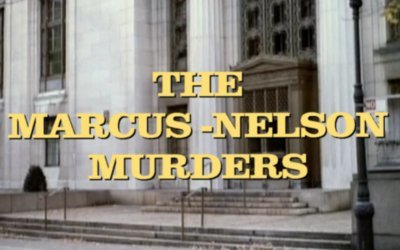
After completing the entire run of my beloved 1970s series “Kojak” (if you follow @willpfeifer on Twitter, you're probably sick of all the Kojak-related tweets), I decided to delve into the TV movies that aired both before and after the series. “The Marcus-Nelson Murders” ran as “The CBS Thursday Night Movie” way back in March 1973, about six months before “Kojak” debuted. The movie is very, very good, but in a slightly different way than the series itself. For one thing, the story is a sprawling tale (based loosely on a true story) about two (white) women who are raped and murdered and the young (black) man who is arrested and railroaded into a confession by corrupt cops. Lt. Theo Kojack (the TV show would drop the “c” from the name) doesn’t even play a big role until the second half of the film. Until then, he skirts around the edge of the case, becoming increasingly suspicious that the prime suspect is not, in fact the one who did it. One of the best things about the TV series “Kojak” was how it combined gritty 1970s crime drama with a certain sardonic sense of humor, mostly thanks to Telly Savalas’ sly performance. “The Marcus-Nelson Murders” is certainly gritty – it feels very much like “The French Connection” or “Serpico” – but it doesn’t have the humor of the show. Kojack is much more driven here, furious about the corruption around him and frustrated by the fact that, in the end, there’s really not much justice to be found. I was surprised how “adult” and downbeat the movie was, in fact, and impressed as well. Hard to see something like this hitting the airwaves today – especially on CBS, home of a dozen or so shows that couldn’t conceive of something as outrageous as police corruption. Keep an eye out for a young Ned Beatty and '70s stalwart Marjoe Gortner. Also, Telly's brother, George Savalas, plays a reporter here, though of course he'd join the cast of "Kojak" as the slovenly, plant loving cop Stavros.
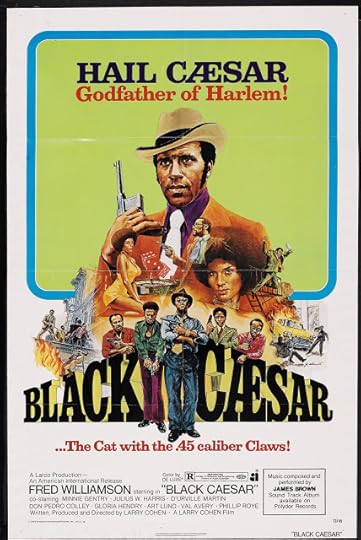
In the last installment, I slammed Larry Cohen’s “The Stuff,” a boring, unimaginative film that wasted the potential of its premise. But thankfully, I watched another (and earlier) Cohen film in April that delivered all the thrills its premise promised, his 1973 crime thriller “Black Caesar.” The idea is beyond simple: Take the classic gangster movie template of the 1930s Warner Bros. movies, like “Little Caesar” and “The Public Enemy,” and update it for the (then) modern Blaxploitation era. Fred “The Hammer” Williamson stars as Tommy Gibbs, a poor ghetto kid who climbs the ranks of crimedom in Harlem. Like I said, it’s the standard gangster plot, but having the lead character be a black man adds an element of rage and injustice that throws some additional gasoline on the fire, and Williamson makes the most of it. He’s beyond ruthless – he really enjoys turning the tables on the Italian gangsters and corrupt cops who stand in his way. (The final scene between him and his nemesis, a nightmarish Irish cop played by Art Lund, involves humiliation, shoe polish and tables being turned in a way I’ve never seen in any movie.) Naturally, as with the classic gangster movies, Gibbs eventually falls from grace, and the scenes of him stumbling around New York City mortally wounded, are surprisingly powerful. Cohen apparently filmed them without a permit, and the reaction of the shocked bystanders was genuine. Now that’s how you make a movie!
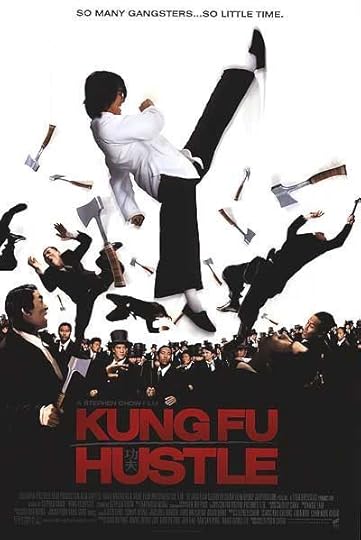
Allie and I watched this one (I showed it to her without realizing it’s actually rated R, though I’m not sure why it earned that rating), and it reinforced my opinion that it’s one of the most purely fun movies of the 21stcentury. From the opening moments, where the villainous Axe Gang takes the streets in an elaborate dance number to the final shots, which hint that the whole thing is going to start all over again, writer/director/star Stephen Chow packs every frame with imagination, action and heart. It really is a live-action cartoon, using CGI to contort the actors’ bodies and faces like they’re Warner Bros. characters, running like the Roadrunner or getting twisted like Daffy Duck. But it’s not all goofy laughs. There are moments of surprising poetry and grace sprinkled throughout, such as the shot of the Axe Gang members suspended in the air like a Magritte painting. Best of all, the finale battle ends with our formerly goofy hero achieving a sort of transcendent grace and the big villain kneeling before him, eager to learn and change. It’s quite a finale that somehow, strangely, perfectly fits with what’s come before.

After completing the entire run of my beloved 1970s series “Kojak” (if you follow @willpfeifer on Twitter, you're probably sick of all the Kojak-related tweets), I decided to delve into the TV movies that aired both before and after the series. “The Marcus-Nelson Murders” ran as “The CBS Thursday Night Movie” way back in March 1973, about six months before “Kojak” debuted. The movie is very, very good, but in a slightly different way than the series itself. For one thing, the story is a sprawling tale (based loosely on a true story) about two (white) women who are raped and murdered and the young (black) man who is arrested and railroaded into a confession by corrupt cops. Lt. Theo Kojack (the TV show would drop the “c” from the name) doesn’t even play a big role until the second half of the film. Until then, he skirts around the edge of the case, becoming increasingly suspicious that the prime suspect is not, in fact the one who did it. One of the best things about the TV series “Kojak” was how it combined gritty 1970s crime drama with a certain sardonic sense of humor, mostly thanks to Telly Savalas’ sly performance. “The Marcus-Nelson Murders” is certainly gritty – it feels very much like “The French Connection” or “Serpico” – but it doesn’t have the humor of the show. Kojack is much more driven here, furious about the corruption around him and frustrated by the fact that, in the end, there’s really not much justice to be found. I was surprised how “adult” and downbeat the movie was, in fact, and impressed as well. Hard to see something like this hitting the airwaves today – especially on CBS, home of a dozen or so shows that couldn’t conceive of something as outrageous as police corruption. Keep an eye out for a young Ned Beatty and '70s stalwart Marjoe Gortner. Also, Telly's brother, George Savalas, plays a reporter here, though of course he'd join the cast of "Kojak" as the slovenly, plant loving cop Stavros.

In the last installment, I slammed Larry Cohen’s “The Stuff,” a boring, unimaginative film that wasted the potential of its premise. But thankfully, I watched another (and earlier) Cohen film in April that delivered all the thrills its premise promised, his 1973 crime thriller “Black Caesar.” The idea is beyond simple: Take the classic gangster movie template of the 1930s Warner Bros. movies, like “Little Caesar” and “The Public Enemy,” and update it for the (then) modern Blaxploitation era. Fred “The Hammer” Williamson stars as Tommy Gibbs, a poor ghetto kid who climbs the ranks of crimedom in Harlem. Like I said, it’s the standard gangster plot, but having the lead character be a black man adds an element of rage and injustice that throws some additional gasoline on the fire, and Williamson makes the most of it. He’s beyond ruthless – he really enjoys turning the tables on the Italian gangsters and corrupt cops who stand in his way. (The final scene between him and his nemesis, a nightmarish Irish cop played by Art Lund, involves humiliation, shoe polish and tables being turned in a way I’ve never seen in any movie.) Naturally, as with the classic gangster movies, Gibbs eventually falls from grace, and the scenes of him stumbling around New York City mortally wounded, are surprisingly powerful. Cohen apparently filmed them without a permit, and the reaction of the shocked bystanders was genuine. Now that’s how you make a movie!

Allie and I watched this one (I showed it to her without realizing it’s actually rated R, though I’m not sure why it earned that rating), and it reinforced my opinion that it’s one of the most purely fun movies of the 21stcentury. From the opening moments, where the villainous Axe Gang takes the streets in an elaborate dance number to the final shots, which hint that the whole thing is going to start all over again, writer/director/star Stephen Chow packs every frame with imagination, action and heart. It really is a live-action cartoon, using CGI to contort the actors’ bodies and faces like they’re Warner Bros. characters, running like the Roadrunner or getting twisted like Daffy Duck. But it’s not all goofy laughs. There are moments of surprising poetry and grace sprinkled throughout, such as the shot of the Axe Gang members suspended in the air like a Magritte painting. Best of all, the finale battle ends with our formerly goofy hero achieving a sort of transcendent grace and the big villain kneeling before him, eager to learn and change. It’s quite a finale that somehow, strangely, perfectly fits with what’s come before.
Published on May 22, 2017 17:45
May 13, 2017
Movies I Watched in April, Part 1
Slacked off last month on the ol' blog, but I hope to do better in May. Let's see if that actually happens. In the meantime, here's Part One of the April Movie Recap:
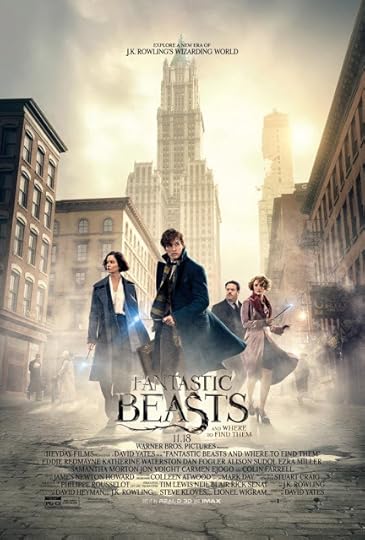
To be honest, I liked this one as much as some of the actual Harry Potter movies. Not being so tightly tied to all that Hogwarts continuity freed things up a bit, as did focusing on a group of adults for a change. Plus, I’m a sucker for a vintage New York setting, and I really enjoyed Dan Fogler as Kowalski, the would-be baker who gets involved with all the magic goings on. (The Harry Potter movies frustrate me because they almost never have any intersection between the world of magic and the world of muggles, i.e., us.) My one issue with the movie came in the very last moments (spoiler warning): I much prefer Colin Farrell as the scheming, ominous, crazy-haired villain than the Johnny Depp version we’re apparently getting in the sequel.
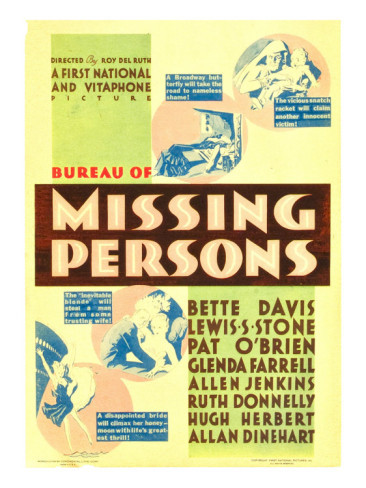 Very entertaining character comedy/crime drama released by Warner Bros. during the grand old pre-Code year of 1933. Like a lot of movies from that era, what it lacks in a tight plot it more than makes up for in one interesting thing happening after the other in rapid succession. Pat O’Brien plays “Butch Sanders,” a tough cop re-assigned to the missing persons department because he was too brutal (!) for other police work. O’Brien barrels through various minor plotlines, bringing that distinctly sarcastic style he used in his early films, before he switched to playing a never-ending succession of priests and saintly types. Eventually, he meets an impossibly young Bette Davis, who’s on the run and wanted for the murder of her husband. O’Brien smells a rat and uses a fake funeral (!) to get to the truth. It’s fast-paced, funny and just naughty enough to fit in with the other Warner Bros. pre-Codes. Bonus points for including a murderer’s row of vintage character actors: Lewis Stone, Allen Jenkins, Hugh Hubert, Ruth Donnelly and Glenda Farrell.The Stuff
Very entertaining character comedy/crime drama released by Warner Bros. during the grand old pre-Code year of 1933. Like a lot of movies from that era, what it lacks in a tight plot it more than makes up for in one interesting thing happening after the other in rapid succession. Pat O’Brien plays “Butch Sanders,” a tough cop re-assigned to the missing persons department because he was too brutal (!) for other police work. O’Brien barrels through various minor plotlines, bringing that distinctly sarcastic style he used in his early films, before he switched to playing a never-ending succession of priests and saintly types. Eventually, he meets an impossibly young Bette Davis, who’s on the run and wanted for the murder of her husband. O’Brien smells a rat and uses a fake funeral (!) to get to the truth. It’s fast-paced, funny and just naughty enough to fit in with the other Warner Bros. pre-Codes. Bonus points for including a murderer’s row of vintage character actors: Lewis Stone, Allen Jenkins, Hugh Hubert, Ruth Donnelly and Glenda Farrell.The Stuff
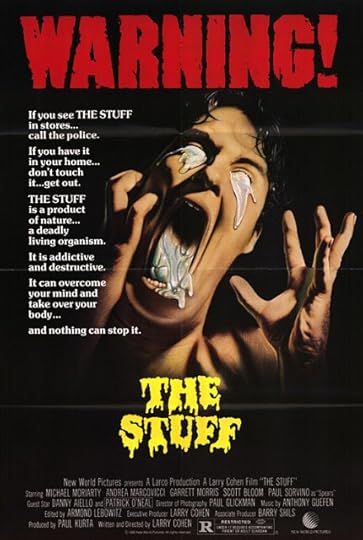
I had high hopes for this Larry Cohen horror movie/social satire, I really did. I love some of Cohen’s other movies, including “Q: The Winged Serpent,” “God Told Me To” and “The Private Files of J. Edgar Hoover,” and a movie about a heavily advertised snack food that’s actually takes over the minds of those who eat it sure sounded like a winner. Trouble is, that great concept is wasted in this dull, unfunny film. Michael Moriarty takes the lead, but unlike “Q,” where he brings an oddball energy to his role, here he slows an already draggy movie down to a glacial pace with his mannered, off-putting performance. He doesn’t get much help from the rest of the cast, which includes a post-SNL Garrett Morris as a Famous Amos-like entrepreneur (for no reason that I can see), a young Danny Aiello and a young Paul Sorvino. The only fun parts come in two places: 1. The inevitable gross-out deaths of the various victims of “The Stuff,” and 2. The pitch-perfect commercials for the product, which manage to both capture of the feeling of ‘80s ads while sending them up at the same time. If the rest of the movie were as good as those fleeting commercials, “The Stuff” would be some sort of masterpiece.
Up next: A much better Larry Cohen movie, the "Kojack" pilot film (and yes, that spelling is correct) and one of my favorite kung fu movies of all time.

To be honest, I liked this one as much as some of the actual Harry Potter movies. Not being so tightly tied to all that Hogwarts continuity freed things up a bit, as did focusing on a group of adults for a change. Plus, I’m a sucker for a vintage New York setting, and I really enjoyed Dan Fogler as Kowalski, the would-be baker who gets involved with all the magic goings on. (The Harry Potter movies frustrate me because they almost never have any intersection between the world of magic and the world of muggles, i.e., us.) My one issue with the movie came in the very last moments (spoiler warning): I much prefer Colin Farrell as the scheming, ominous, crazy-haired villain than the Johnny Depp version we’re apparently getting in the sequel.
 Very entertaining character comedy/crime drama released by Warner Bros. during the grand old pre-Code year of 1933. Like a lot of movies from that era, what it lacks in a tight plot it more than makes up for in one interesting thing happening after the other in rapid succession. Pat O’Brien plays “Butch Sanders,” a tough cop re-assigned to the missing persons department because he was too brutal (!) for other police work. O’Brien barrels through various minor plotlines, bringing that distinctly sarcastic style he used in his early films, before he switched to playing a never-ending succession of priests and saintly types. Eventually, he meets an impossibly young Bette Davis, who’s on the run and wanted for the murder of her husband. O’Brien smells a rat and uses a fake funeral (!) to get to the truth. It’s fast-paced, funny and just naughty enough to fit in with the other Warner Bros. pre-Codes. Bonus points for including a murderer’s row of vintage character actors: Lewis Stone, Allen Jenkins, Hugh Hubert, Ruth Donnelly and Glenda Farrell.The Stuff
Very entertaining character comedy/crime drama released by Warner Bros. during the grand old pre-Code year of 1933. Like a lot of movies from that era, what it lacks in a tight plot it more than makes up for in one interesting thing happening after the other in rapid succession. Pat O’Brien plays “Butch Sanders,” a tough cop re-assigned to the missing persons department because he was too brutal (!) for other police work. O’Brien barrels through various minor plotlines, bringing that distinctly sarcastic style he used in his early films, before he switched to playing a never-ending succession of priests and saintly types. Eventually, he meets an impossibly young Bette Davis, who’s on the run and wanted for the murder of her husband. O’Brien smells a rat and uses a fake funeral (!) to get to the truth. It’s fast-paced, funny and just naughty enough to fit in with the other Warner Bros. pre-Codes. Bonus points for including a murderer’s row of vintage character actors: Lewis Stone, Allen Jenkins, Hugh Hubert, Ruth Donnelly and Glenda Farrell.The Stuff
I had high hopes for this Larry Cohen horror movie/social satire, I really did. I love some of Cohen’s other movies, including “Q: The Winged Serpent,” “God Told Me To” and “The Private Files of J. Edgar Hoover,” and a movie about a heavily advertised snack food that’s actually takes over the minds of those who eat it sure sounded like a winner. Trouble is, that great concept is wasted in this dull, unfunny film. Michael Moriarty takes the lead, but unlike “Q,” where he brings an oddball energy to his role, here he slows an already draggy movie down to a glacial pace with his mannered, off-putting performance. He doesn’t get much help from the rest of the cast, which includes a post-SNL Garrett Morris as a Famous Amos-like entrepreneur (for no reason that I can see), a young Danny Aiello and a young Paul Sorvino. The only fun parts come in two places: 1. The inevitable gross-out deaths of the various victims of “The Stuff,” and 2. The pitch-perfect commercials for the product, which manage to both capture of the feeling of ‘80s ads while sending them up at the same time. If the rest of the movie were as good as those fleeting commercials, “The Stuff” would be some sort of masterpiece.
Up next: A much better Larry Cohen movie, the "Kojack" pilot film (and yes, that spelling is correct) and one of my favorite kung fu movies of all time.
Published on May 13, 2017 10:42
April 13, 2017
Movies I Watched in March, Part 2
And so, without further ado...
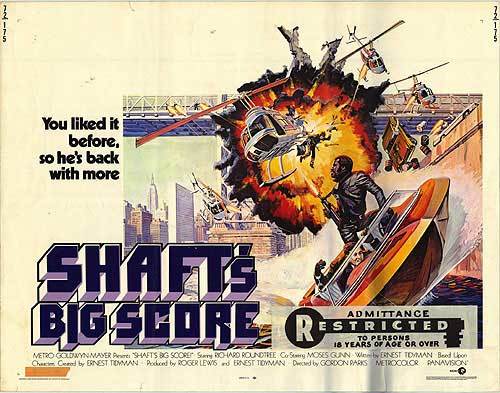
This 1972 sequel to the 1971 blaxploitation classic brings back the crucial elements of the original, including Gordon Parks and star Richard Roundtree, leaving out only Isaac Hayes’ iconic theme song (with a decent but lesser tune from Parks himself). It also takes everything to another level, scale-wise, expanding the plot, expanding the locations and adding some big-budget sequences, including a dangerous-looking helicopter/car/boat chase that had to be a logistical nightmare. The calm center, as before, is Roundtree, reacting with almost supernatural cool to the chaos around him. The rest of the cast is fun, including Moses Gunn as a gangster and Julius Harris (Tee Hee from “Live and Let Die”) as a tough cop, but it’s the distinctive ‘70s settings that steal the show, from a mobster’s very classy, very 1970s luxury apartment to a nightclub with a body-paint-based dance show that has to be seen to be believed. "Shaft's Big Score" lacks some of the grit of the original, but there’s plenty of attitude, style and crazy violence to keep you entertained, trust me.
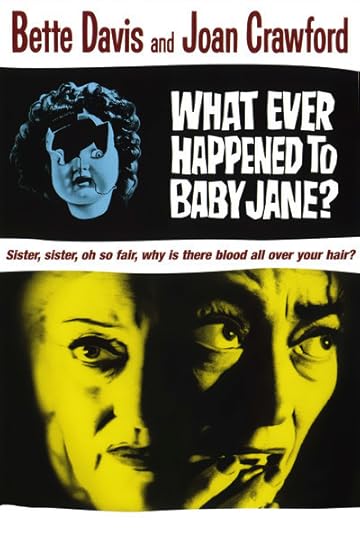 Amy and I watched this because we’ve been watching FX’s “Feud” miniseries, and because the fine folks at TCM were kind enough to rerun the movie itself one night. I’d seen it before, so this time around I was mostly just watching to see how closely the behind-the-scenes drama and cinema recreations from “Feud” jibed with the original. Pretty close, I’m happy to report, or at least close enough to make a “Baby Jane” rewatch worthwhile. I have to admit, though I’m fascinated by the backstory, I don’t find “Whatever Happened to Baby Jane” itself that interesting – or entertaining. Maybe because I grew up seeing Joan Crawford and Bette Davis as older, past-their-prime actresses it wasn’t shocking in the least to see them exploit their aging images in this film. And without that bit of exploitation – excuse me, “hagsploitation” -- the movie itself isn’t much – a sloppily constructed melodrama about characters we don’t care about doing mean things to each other. The black-and-white look is nice, and there are some memorable scenes (the rat on the plate, for example), but the whole thing is so clunky and heavy-handed it’s hard to get into the story.
Amy and I watched this because we’ve been watching FX’s “Feud” miniseries, and because the fine folks at TCM were kind enough to rerun the movie itself one night. I’d seen it before, so this time around I was mostly just watching to see how closely the behind-the-scenes drama and cinema recreations from “Feud” jibed with the original. Pretty close, I’m happy to report, or at least close enough to make a “Baby Jane” rewatch worthwhile. I have to admit, though I’m fascinated by the backstory, I don’t find “Whatever Happened to Baby Jane” itself that interesting – or entertaining. Maybe because I grew up seeing Joan Crawford and Bette Davis as older, past-their-prime actresses it wasn’t shocking in the least to see them exploit their aging images in this film. And without that bit of exploitation – excuse me, “hagsploitation” -- the movie itself isn’t much – a sloppily constructed melodrama about characters we don’t care about doing mean things to each other. The black-and-white look is nice, and there are some memorable scenes (the rat on the plate, for example), but the whole thing is so clunky and heavy-handed it’s hard to get into the story.
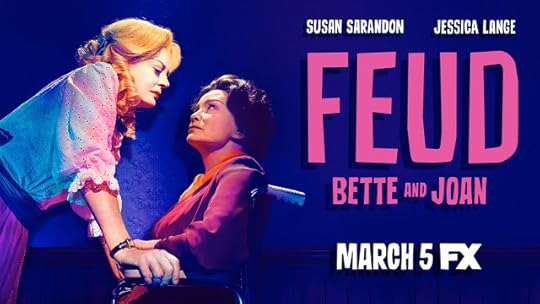
On the other hand, I will say that, with just a few episodes left, I’m finding “Feud” almost insanely entertaining. I wasn’t excited about watching it in the least, having not been a fan of Ryan Murphy’s “American Horror Story” and figuring this would be an overly campy screamfest between Jessica Lange (as Crawford) and Susan Sarandon (as Davis), but I was completely wrong. Inaccuracies aside, it’s a fascinating, funny, poignant look at two Hollywood legends watching their time in the spotlight come crashing to an end. Plus, the cast is stellar, with Alfred Molina (as director Robert Aldrich), Stanley Tucci (as Jack Warner!), Judy David (as Hedda Hopper), Dominic Burgess (uncanny as Victor Buono), Jackie Hoffman (as Crawford’s put-upon maid, Mamacita) and the great Toby Huss, bringing back his uncanny Frank Sinatra impersonation. As a die-hard old movie fan, I’m obviously the target audience for this show, but I have a hard time picturing someone who wouldn’t find it entertaining on some level. Check it out – and don’t both watching “Whatever Happened to Baby Jane.”
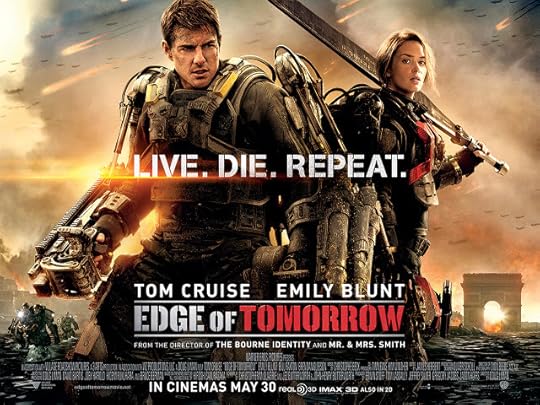
I’ve watched this one more than a few times, mostly chunks of it on HBO whenever it’s being randomly rerun, but after (a) putting it on my best science fiction films list and (b) picking up a blu-ray copy cheap, I decided to give the whole movie another spin – partly convinced to do so by my daughter, who has (surprisingly?) come to love it. And, in what might be odd for a movie that (deliberately) repeats itself so many times, it really holds up to repeat viewings. The screenplay is so clever that it knows exactly how much of the story to replay before jumping to something new, and the rhythm is just right, driving the story to be intriguing and amusing without ever letting it become confusing or boring. Tom Cruise and Emily Blunt are just right in their roles, but allow me to praise the work of the soldiers Cruise ends up with, especially the (late) great Bill Paxton, bringing just the right energy and pop to his dedicated, tough-as-nails but oddly upbeat master sergeant. After seeing this several times, I’m tempted to say it’s the equal of that other great Bill Paxton military science fiction action movie, “Aliens.” At the very least, they’d make one hell of a double feature.
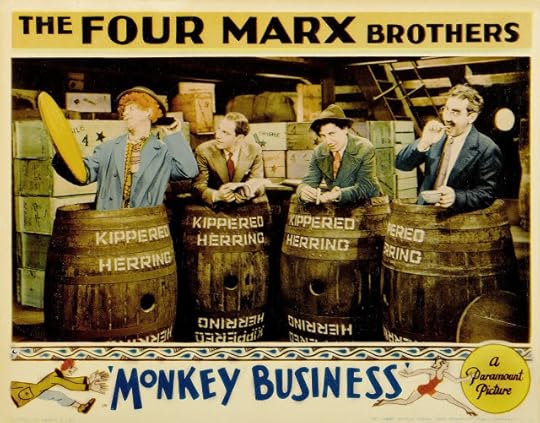
I love this movie, but I don’t really have much more to say about it, mostly because I’ve already reviewed multiple times on this blog. I will say that few things make me happier than knowing that, given the choice of any movie ever made, my darling daughter will, more often than not, choose the Marx brothers, which is why we watched it last month. I can’t imagine her devotion to long-dead movie comedians will last, but I sure hope it does.

This 1972 sequel to the 1971 blaxploitation classic brings back the crucial elements of the original, including Gordon Parks and star Richard Roundtree, leaving out only Isaac Hayes’ iconic theme song (with a decent but lesser tune from Parks himself). It also takes everything to another level, scale-wise, expanding the plot, expanding the locations and adding some big-budget sequences, including a dangerous-looking helicopter/car/boat chase that had to be a logistical nightmare. The calm center, as before, is Roundtree, reacting with almost supernatural cool to the chaos around him. The rest of the cast is fun, including Moses Gunn as a gangster and Julius Harris (Tee Hee from “Live and Let Die”) as a tough cop, but it’s the distinctive ‘70s settings that steal the show, from a mobster’s very classy, very 1970s luxury apartment to a nightclub with a body-paint-based dance show that has to be seen to be believed. "Shaft's Big Score" lacks some of the grit of the original, but there’s plenty of attitude, style and crazy violence to keep you entertained, trust me.
 Amy and I watched this because we’ve been watching FX’s “Feud” miniseries, and because the fine folks at TCM were kind enough to rerun the movie itself one night. I’d seen it before, so this time around I was mostly just watching to see how closely the behind-the-scenes drama and cinema recreations from “Feud” jibed with the original. Pretty close, I’m happy to report, or at least close enough to make a “Baby Jane” rewatch worthwhile. I have to admit, though I’m fascinated by the backstory, I don’t find “Whatever Happened to Baby Jane” itself that interesting – or entertaining. Maybe because I grew up seeing Joan Crawford and Bette Davis as older, past-their-prime actresses it wasn’t shocking in the least to see them exploit their aging images in this film. And without that bit of exploitation – excuse me, “hagsploitation” -- the movie itself isn’t much – a sloppily constructed melodrama about characters we don’t care about doing mean things to each other. The black-and-white look is nice, and there are some memorable scenes (the rat on the plate, for example), but the whole thing is so clunky and heavy-handed it’s hard to get into the story.
Amy and I watched this because we’ve been watching FX’s “Feud” miniseries, and because the fine folks at TCM were kind enough to rerun the movie itself one night. I’d seen it before, so this time around I was mostly just watching to see how closely the behind-the-scenes drama and cinema recreations from “Feud” jibed with the original. Pretty close, I’m happy to report, or at least close enough to make a “Baby Jane” rewatch worthwhile. I have to admit, though I’m fascinated by the backstory, I don’t find “Whatever Happened to Baby Jane” itself that interesting – or entertaining. Maybe because I grew up seeing Joan Crawford and Bette Davis as older, past-their-prime actresses it wasn’t shocking in the least to see them exploit their aging images in this film. And without that bit of exploitation – excuse me, “hagsploitation” -- the movie itself isn’t much – a sloppily constructed melodrama about characters we don’t care about doing mean things to each other. The black-and-white look is nice, and there are some memorable scenes (the rat on the plate, for example), but the whole thing is so clunky and heavy-handed it’s hard to get into the story.
On the other hand, I will say that, with just a few episodes left, I’m finding “Feud” almost insanely entertaining. I wasn’t excited about watching it in the least, having not been a fan of Ryan Murphy’s “American Horror Story” and figuring this would be an overly campy screamfest between Jessica Lange (as Crawford) and Susan Sarandon (as Davis), but I was completely wrong. Inaccuracies aside, it’s a fascinating, funny, poignant look at two Hollywood legends watching their time in the spotlight come crashing to an end. Plus, the cast is stellar, with Alfred Molina (as director Robert Aldrich), Stanley Tucci (as Jack Warner!), Judy David (as Hedda Hopper), Dominic Burgess (uncanny as Victor Buono), Jackie Hoffman (as Crawford’s put-upon maid, Mamacita) and the great Toby Huss, bringing back his uncanny Frank Sinatra impersonation. As a die-hard old movie fan, I’m obviously the target audience for this show, but I have a hard time picturing someone who wouldn’t find it entertaining on some level. Check it out – and don’t both watching “Whatever Happened to Baby Jane.”

I’ve watched this one more than a few times, mostly chunks of it on HBO whenever it’s being randomly rerun, but after (a) putting it on my best science fiction films list and (b) picking up a blu-ray copy cheap, I decided to give the whole movie another spin – partly convinced to do so by my daughter, who has (surprisingly?) come to love it. And, in what might be odd for a movie that (deliberately) repeats itself so many times, it really holds up to repeat viewings. The screenplay is so clever that it knows exactly how much of the story to replay before jumping to something new, and the rhythm is just right, driving the story to be intriguing and amusing without ever letting it become confusing or boring. Tom Cruise and Emily Blunt are just right in their roles, but allow me to praise the work of the soldiers Cruise ends up with, especially the (late) great Bill Paxton, bringing just the right energy and pop to his dedicated, tough-as-nails but oddly upbeat master sergeant. After seeing this several times, I’m tempted to say it’s the equal of that other great Bill Paxton military science fiction action movie, “Aliens.” At the very least, they’d make one hell of a double feature.

I love this movie, but I don’t really have much more to say about it, mostly because I’ve already reviewed multiple times on this blog. I will say that few things make me happier than knowing that, given the choice of any movie ever made, my darling daughter will, more often than not, choose the Marx brothers, which is why we watched it last month. I can’t imagine her devotion to long-dead movie comedians will last, but I sure hope it does.
Published on April 13, 2017 04:18
April 2, 2017
Movies I Watched in March, Part 1
Hey, April has just begun and the first part of the recap is already posted. Enjoy the punctuality while it lasts, because believe me, it won't.
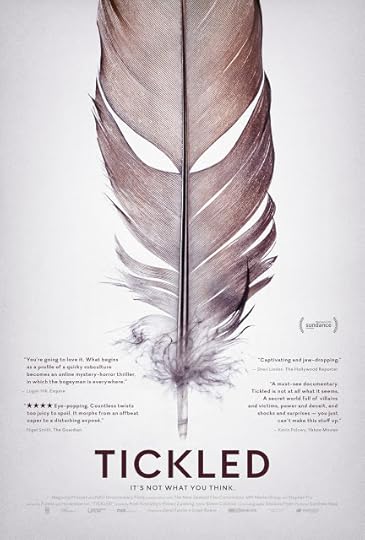
As Amy and I expected, this documentary about the "underground world of competitive tickling" was pretty strange, though admittedly not as strange (and fascinating) as it might be if it actually was about an underground world of competitive tickling. Instead, it focuses on an online empire devoted to tricking desperate young men in need of money into appearing in vaguely creepy videos in which they are tickled by other man. At first, it sounds like just another creepy corner of the internet, but the movie's big twist is that this is all part of a very (very very) elaborate scam concocted by a rich weirdo who really (really really) likes watching young men tickle each other. In the end the mystery is solved (sort of), but nothing is changed, and that rich weirdo apparently is continuing his bizarro tickling scheme. It's not a bad movie by any means, and there's definitely nothing else like it out there, but in the end, it left me wanting a little more.
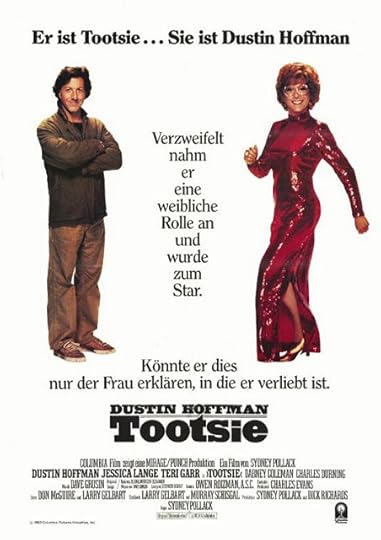
In our current age of gender fluidity and changing ideas about male-female relations, it's interesting to watch a movie from 35 years ago where a man dresses as a woman and learns to be a better man as a result. I'm sure there are a million ways to attack this movie for its gender politics, but I'll leave it to someone more in touch with that angle than myself. As for me, a movie fan who last saw "Tootsie" back in high school, I thought it held up very well. The plot is nicely complex, the jokes are solid and the cast -- Dustin Hoffman, Sydney Pollack (who also directed), Teri Garr, Jessica Lange, Charles Durning, Geena Davis, Dabney Coleman, Lynne Thigpen and George Gaines, plus an uncredited Bill Murray -- is one for the ages. Only two things about the movie bug me: One, that terrible "Go, Tootsie, Go" song during the montage is awful, and two, Hoffman has plucked eyebrows from frame one, which just looks ... weird. By the way, back in high school, I had a teacher who claimed that "Police Academy," which arrived two years later and also co-starred George Gaynes, was the better movie. Even way back then, I knew this was an insane opinion.
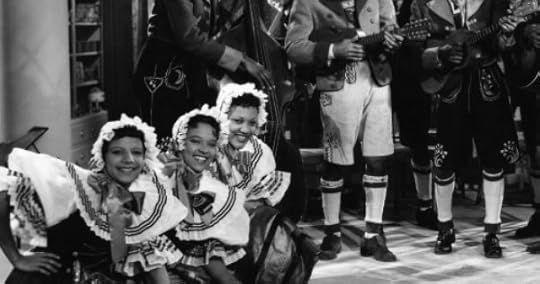
Now this, this is why I love Turner Classic Movies. Where else are you going to see "Snow Gets in Your Eyes," a 1938 short about a sausage salesman at a department store who wins the heart of the girl of his dreams by winning a ski jump contest that takes place on the store's indoor (!) ski slope. The plot is, obviously, wonderfully goofy, and the leads have a certain oddball charm, but the movie (which clocks in at a whopping 20 minutes) really takes off when the boring white folks step aside and a pair of African American acts take center stage. A group called Cats and the Fiddle and the Dandridge Sisters -- screen legend Dorothy, her real-life sister Vivian and Etta Jones -- team up for a crazy, catchy tune called, believe it or not, "The Harlem Yodel." It's a lot of fun, but almost indescribable. Thankfully, I don't have to describe it -- you can watch it right here:
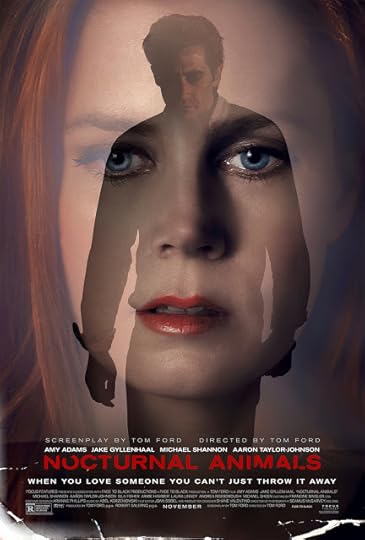
Interesting little thriller/mood piece, though maybe not quite as interesting as it thinks it is -- or as it could be. Amy Adams plays a cold-as-ice art gallery owner with an equally chilly husband (Armie Hammer) who is (a) cheating on her and (b) losing the fortune she married him for. Suddenly, a manuscript arrives written by her ex-husband (Jake Gyllenhaal), and at that point the movie diverges into two tracks: one devoted to her current troubles and her reading of the book, and one that shows the story of the manuscript -- or, to be more precise, her picturing the story of the manuscript in which she assigns visuals to the characters, with the lead played by Gyllenhaal, the wife played by Adams lookalike Isla Fisher and the daughter a dead-ringer for her own college-age daughter. (We also see flashbacks to her more innocent days with Gyllenhaal in a sort of third track.) The story of the novel is compelling and violent, with Michael Shannon delivering a great (and Oscar-nominated performance) as a dying cop. It's so compelling, in fact, that after a while I was wishing the movie would forget about poor little rich girl Amy Adams and focus entirely on the noir nightmare of the manuscript. Still, having that framing sequence does add some elements that are fun to ponder after the credits roll, and with Tom Ford directing, the whole thing looks gorgeous, from the Los Angeles homes to the grime and grit of the desert.
Coming up next: A Shaft sequel, a "Feud" tie-in, one of the best sci-fi movies in years and yes, of course, more Marx Brothers.

As Amy and I expected, this documentary about the "underground world of competitive tickling" was pretty strange, though admittedly not as strange (and fascinating) as it might be if it actually was about an underground world of competitive tickling. Instead, it focuses on an online empire devoted to tricking desperate young men in need of money into appearing in vaguely creepy videos in which they are tickled by other man. At first, it sounds like just another creepy corner of the internet, but the movie's big twist is that this is all part of a very (very very) elaborate scam concocted by a rich weirdo who really (really really) likes watching young men tickle each other. In the end the mystery is solved (sort of), but nothing is changed, and that rich weirdo apparently is continuing his bizarro tickling scheme. It's not a bad movie by any means, and there's definitely nothing else like it out there, but in the end, it left me wanting a little more.

In our current age of gender fluidity and changing ideas about male-female relations, it's interesting to watch a movie from 35 years ago where a man dresses as a woman and learns to be a better man as a result. I'm sure there are a million ways to attack this movie for its gender politics, but I'll leave it to someone more in touch with that angle than myself. As for me, a movie fan who last saw "Tootsie" back in high school, I thought it held up very well. The plot is nicely complex, the jokes are solid and the cast -- Dustin Hoffman, Sydney Pollack (who also directed), Teri Garr, Jessica Lange, Charles Durning, Geena Davis, Dabney Coleman, Lynne Thigpen and George Gaines, plus an uncredited Bill Murray -- is one for the ages. Only two things about the movie bug me: One, that terrible "Go, Tootsie, Go" song during the montage is awful, and two, Hoffman has plucked eyebrows from frame one, which just looks ... weird. By the way, back in high school, I had a teacher who claimed that "Police Academy," which arrived two years later and also co-starred George Gaynes, was the better movie. Even way back then, I knew this was an insane opinion.

Now this, this is why I love Turner Classic Movies. Where else are you going to see "Snow Gets in Your Eyes," a 1938 short about a sausage salesman at a department store who wins the heart of the girl of his dreams by winning a ski jump contest that takes place on the store's indoor (!) ski slope. The plot is, obviously, wonderfully goofy, and the leads have a certain oddball charm, but the movie (which clocks in at a whopping 20 minutes) really takes off when the boring white folks step aside and a pair of African American acts take center stage. A group called Cats and the Fiddle and the Dandridge Sisters -- screen legend Dorothy, her real-life sister Vivian and Etta Jones -- team up for a crazy, catchy tune called, believe it or not, "The Harlem Yodel." It's a lot of fun, but almost indescribable. Thankfully, I don't have to describe it -- you can watch it right here:

Interesting little thriller/mood piece, though maybe not quite as interesting as it thinks it is -- or as it could be. Amy Adams plays a cold-as-ice art gallery owner with an equally chilly husband (Armie Hammer) who is (a) cheating on her and (b) losing the fortune she married him for. Suddenly, a manuscript arrives written by her ex-husband (Jake Gyllenhaal), and at that point the movie diverges into two tracks: one devoted to her current troubles and her reading of the book, and one that shows the story of the manuscript -- or, to be more precise, her picturing the story of the manuscript in which she assigns visuals to the characters, with the lead played by Gyllenhaal, the wife played by Adams lookalike Isla Fisher and the daughter a dead-ringer for her own college-age daughter. (We also see flashbacks to her more innocent days with Gyllenhaal in a sort of third track.) The story of the novel is compelling and violent, with Michael Shannon delivering a great (and Oscar-nominated performance) as a dying cop. It's so compelling, in fact, that after a while I was wishing the movie would forget about poor little rich girl Amy Adams and focus entirely on the noir nightmare of the manuscript. Still, having that framing sequence does add some elements that are fun to ponder after the credits roll, and with Tom Ford directing, the whole thing looks gorgeous, from the Los Angeles homes to the grime and grit of the desert.
Coming up next: A Shaft sequel, a "Feud" tie-in, one of the best sci-fi movies in years and yes, of course, more Marx Brothers.
Published on April 02, 2017 08:01
March 21, 2017
Here's that whole 'Favorite Movie for Every Year You've Been Alive' thing that all the kids are talking about
Since everyone is posting those lists of a favorite movie for every year they've been alive, and since two things I can never resist are (a) talking movies and (b) sharing self-indulgent lists, I figured I might as well use it to get some content on this blog. So here goes. By the way, if nothing else, this shows just how damned old I am.
And by the way, this was harder than I thought. Some years -- 1973, 1976, 1977, 1980 -- were hard to bring down to a single favorite film. (Sorry, "Videodrome," "Slap Shot," "Taxi Driver," "Texas Chainsaw Massacre," "The Parallax View" and others). And for some years, which shall go unnamed, it was hard to find a single worthwhile movie. If only everything had been spaced out a little more evenly...
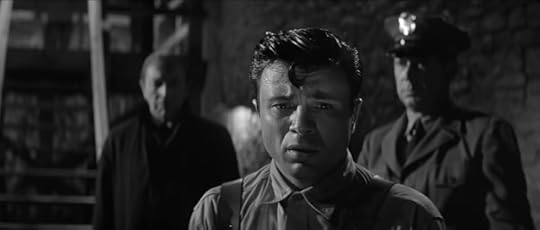
1967 “In Cold Blood”1968 “Rosemary’s Baby”1969 “Take the Money and Run”1970 “Beyond the Valley of the Dolls”1971 “A Clockwork Orange” 1972 “The Candidate”1973 “The Day of the Jackal”1974 “Blazing Saddles”
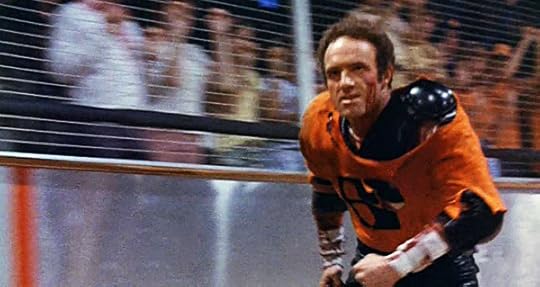
1975 “Rollerball”1976 “Network” 1977 “Star Wars” 1978 “Dawn of the Dead”1979 “The In-Laws”1980 “The Shining” 1981 “Raiders of the Lost Ark” 1982 “Blade Runner” 1983 “The Right Stuff”
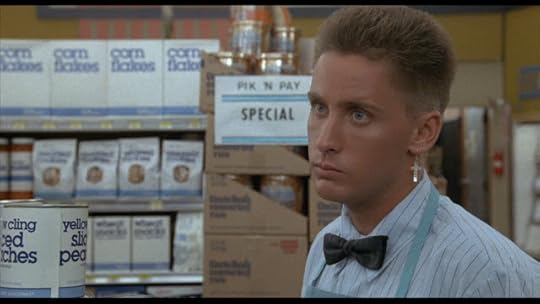
1984 “Repo Man”1985 “Brazil”1986 “Blue Velvet”1987 “Raising Arizona”1988 “Die Hard”1989 “Crimes and Misdemeanors”1990 “Goodfellas”
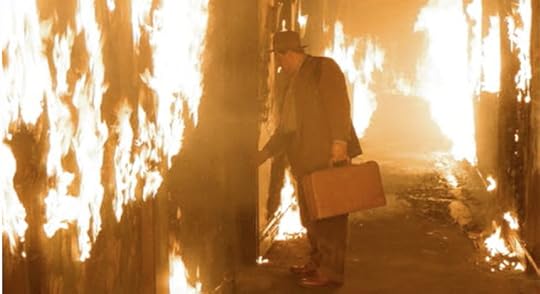
1991 “Barton Fink”1992 “Reservoir Dogs”1993 “The Remains of the Day:1994 The Hudsucker Proxy”1995 “Seven”1996 “Fargo”1997 “Boogie Nights”1998 “Rushmore”1999 “Fight Club”2000 “American Psycho”2001 “Mulholland Dr.”
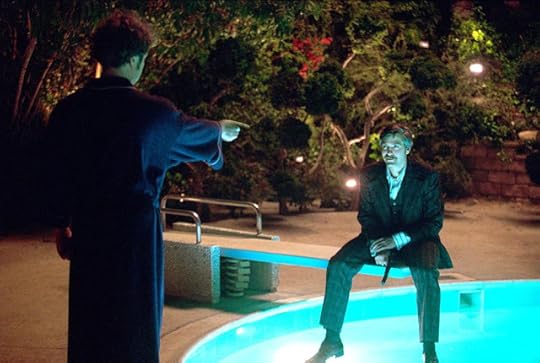
2002 “Confessions of a Dangerous Mind”2003 “Finding Nemo”2004 “Eternal Sunshine of the Spotless Mind”2005 “Good Night and Good Luck”2006 “Children of Men”2007 “Zodiac”2008 “The Wrestler”2009 “Inglourious Basterds”
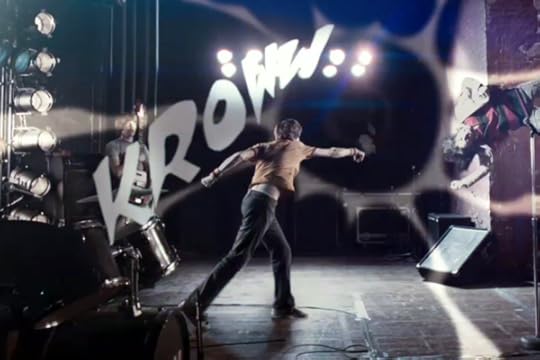
2010 “Scott Pilgrim Vs. The World”2011 “Captain America: The First Avenger”2012 “Looper”2013 “The World’s End”2014 “The Grand Budapest Hotel”2015 “The Martian”2016 “Arrival”
And by the way, this was harder than I thought. Some years -- 1973, 1976, 1977, 1980 -- were hard to bring down to a single favorite film. (Sorry, "Videodrome," "Slap Shot," "Taxi Driver," "Texas Chainsaw Massacre," "The Parallax View" and others). And for some years, which shall go unnamed, it was hard to find a single worthwhile movie. If only everything had been spaced out a little more evenly...

1967 “In Cold Blood”1968 “Rosemary’s Baby”1969 “Take the Money and Run”1970 “Beyond the Valley of the Dolls”1971 “A Clockwork Orange” 1972 “The Candidate”1973 “The Day of the Jackal”1974 “Blazing Saddles”

1975 “Rollerball”1976 “Network” 1977 “Star Wars” 1978 “Dawn of the Dead”1979 “The In-Laws”1980 “The Shining” 1981 “Raiders of the Lost Ark” 1982 “Blade Runner” 1983 “The Right Stuff”

1984 “Repo Man”1985 “Brazil”1986 “Blue Velvet”1987 “Raising Arizona”1988 “Die Hard”1989 “Crimes and Misdemeanors”1990 “Goodfellas”

1991 “Barton Fink”1992 “Reservoir Dogs”1993 “The Remains of the Day:1994 The Hudsucker Proxy”1995 “Seven”1996 “Fargo”1997 “Boogie Nights”1998 “Rushmore”1999 “Fight Club”2000 “American Psycho”2001 “Mulholland Dr.”

2002 “Confessions of a Dangerous Mind”2003 “Finding Nemo”2004 “Eternal Sunshine of the Spotless Mind”2005 “Good Night and Good Luck”2006 “Children of Men”2007 “Zodiac”2008 “The Wrestler”2009 “Inglourious Basterds”

2010 “Scott Pilgrim Vs. The World”2011 “Captain America: The First Avenger”2012 “Looper”2013 “The World’s End”2014 “The Grand Budapest Hotel”2015 “The Martian”2016 “Arrival”
Published on March 21, 2017 16:37
March 16, 2017
Book Review: 'Scarred For Life: The 1970s'
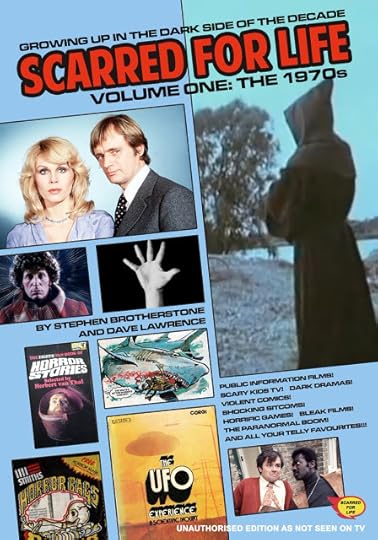
At first glance, “Scarred For Life: Volume 1: The 1970s” should be completely alien to me. After all, Stephen Brotherstone and Dave Lawrence focus almost exclusively on British pop culture of the 1970s, celebrating TV shows, PSAs, comics, books and movies that, in most cases, I’ve never even heard of. It’s literally foreign territory for me, an obsessively detailed look at what it meant to be a kid in England 40 years ago. I was a kid back then, sure, but I grew up more than 3,000 miles away and didn’t know the slightest thing about “The Tomorrow People,” “Escape Into Night” or “Worzel Gummidge.”
But here’s the thing: Turns out, all this stuff is completely up my alley – the ominous tales of horror, the weird apocalyptic themes, the downbeat twists and the too-mature-for-young viewers turns. Just because I’ve never heard of this stuff doesn’t mean it’s not fascinating, and it’s the sheer breathtaking obsessiveness of “Scarred For Life” that brings it all to life. Brotherstone and Lawrence go into insane detail about every subject they cover (and they cover a lot), meaning that even if you’ve never seen a single second of “The Changes,” read a single word of “Night of the Crabs” or glimpsed a single panel of “Kids Rule OK!,” you’ll be an expert in the field by the time you’ve completed “Scarred for Life’s” more than 700 pages.
Yes, 700 pages. In small type. That’s a feature, by the way, not a bug, because Brotherstone and Lawrence have a way with words, not only making all that text enjoyable but downright addicting, meaning that when you’re done, you’ll be craving more. They’ve got a real talent for avoiding dry histories and plot recaps, and instead conveying just what made all this stuff so potent in its ability to warp young minds. The entire book is very conversational, like sitting down with a couple of buddies blessed with sharp insights and impressive memories. They see the creepiness lurking beneath programs like the TV anthology “Shadows,” but they also see the humor behind the fact that it aired at an hour when children were bound to be watching. Episodes are examined in just the right amount of detail, with well-chosen screen-grabs and several “The Art of the Title Sequence” sidebars adding layers to the recollections. What’s more, each entry ends with a short note on where you can see these TV shows (or comic books, movies, etc.) on DVD or the internet.
And though the scary TV section was the most fascinating section of “Scarred for Life” to me – mostly because it was the most unknown – the book goes way beyond creepy British broadcasting. In the television arena alone it includes mesmerizing, substantial looks at the jolly, jaw-dropping racism of “The Black and White Minstrel Show” (exactly what it sounds like) and the cheery, creepy sexism of “On the Buses" (above). Plus there’s an extensive (to say the least) recap of what must be every single terrifying public service announcement that ran on British TV. If the horror shows didn’t completely traumatize you, these “educational” shorts would finish the job.
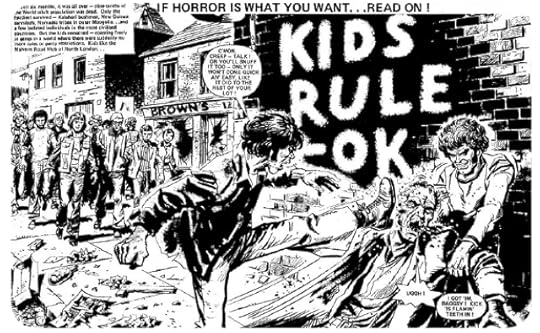
Besides the TV section (the biggest chunk of the book), there are similarly comprehensive looks at novels, movies, comic books, games, toys, candy and just about every single other piece of pop culture that melted young minds back in the 1970s. Admittedly, I have heard of some of this stuff – “A Clockwork Orange,” assorted devil movies, “Zardoz,” Marvel’s various cosmic comics and the game “Which Witch?” (apparently called “Haunted House” across the pond). But even the familiar items took on new life when described in these pages, and the things I hadn’t encountered – including that aforementioned stunningly violent comic called “Kids Rule OK!” (see above) – felt like forgotten artifacts from some alternate timeline, when parents had abandoned their duties and children could ingest whatever entertainment they wanted, whether it was remotely appropriate or not. In other words, what a glorious time it was.
The best thing about “Scarred for Life” is it collects all this insanity into a single, smart volume. It’s like the pop culture history I never knew I wanted but now can’t see how I lived without. I haven’t read every word – like I said, it’s more than 700 pages long – but I’m eager to finish and, what’s more, it’s clearly the sort of book I’ll be paging through and re-reading for years to come.
And guess what? That "Vol. 1" is no joke. A volume dedicated to the 1980s is due later this year.
Hallelujah.
("Scarred for Life: Volume 1: The 1970s" will be available very soon at Lulu Press. As soon as you can order, I'll update that link.)
Published on March 16, 2017 14:48
March 4, 2017
Movies I Watched in February
Sorry, cinema aficionados, only four movies this month. Too busy with work, life and the excellent new show "Legion," I guess. So here we go...
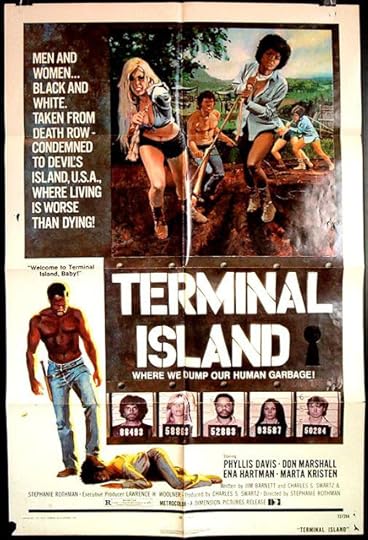
Crazy 1973 action movie I've been hearing about ever since I bought my first "Psychotronic Encyclopedia of Film" back in the mid 1980s but somehow never managed to catch until the fine folks at TCM aired it very late one night. The death penalty's been outlawed, so California ships all its convicted murderers off to a small (but lush) island off its coast, where they're forced to fend for themselves. This being 1973, it means most of the murderers are distinctly camera-friendly, from hunky (and innocent) doctor Tom Selleck to busty (but not innocent) bad girl Phyllis Davis, who appeared in Russ Meyer's "Beyond the Valley of the Dolls" and every TV show of the 1970s. Just like "Survivor" years later, tribes form, alliances are made (and betrayed) and only by teaming up can the relatively good criminals defeat the bad badguys. It's not exactly grim and gritty with the California sun giving everything a healthy glow, and the prisoners look surprisingly clean and well-kept despite living in the wilderness. But it does have that unnerving mix of sex, violence and casual racism that early '70s movies often showcase, and it's surprisingly fast-paced and entertaining all the way through. Plus, as a bonus, the cast includes Roger E. Mosley, which means that, along with Selleck, it's like a sneak peek of "Magnum, P.I." seven years before it aired.
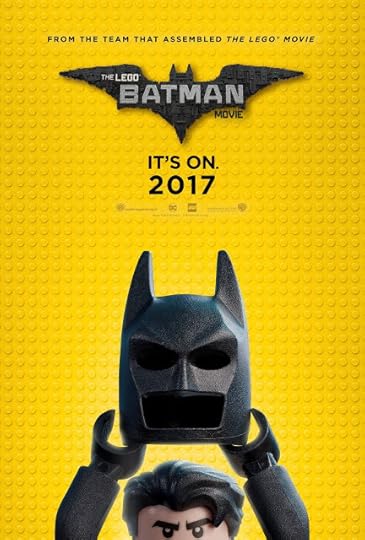
I'm a huge fan of "The Lego Movie" (I think, for one thing, it's much better than any of the new "Star Wars" movies by a long shot), so naturally I was pretty jazzed to see an extended take on Will Arnett's Batman character. And, thankfully, I wasn't disappointed. It lacks the reality-bending ending of "The Lego Movie," but otherwise it's almost as much fun, with nonstop jokes and references for the Batman fans in the audience. (One hilarious sequence references every single previous Batman film in Lego form, then slips in a live-action clip from the 1966 "Batman" movie. Plus, just like in "The Lego Movie," the scope is widened to include villains from other streams of pop culture, including Daleks, King Kong, Jaws, Voldemort and even the Eye of Sauron. And, as a bonus, it has a better handle on the Joker-Batman relationship than any other Batman movie, treating it as the love story (or hate story) it really is.
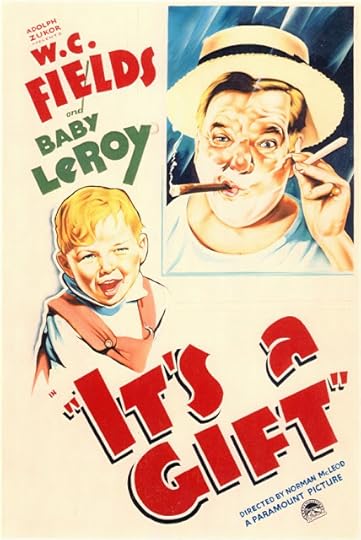
Another film in the massive W.C. Fields set Santy Claus brought me for Christmas. I wouldn't quite it put at the level of "The Bank Dick" (my favorite Fields movie and, frankly, one of my favorite movies of all time), but it's a brilliant bit of comedy nonetheless, wringing some great laughs from the sheer frustrating hell that is Harold Bissonette's life. The unstoppable destruction of his grocery story is classic, but my favorite part involves his desperate attempts to catch a few winks on his porch that are foiled by various visitors, fate and seemingly God himself. And, like I've mentioned before on this blog, I love how his nightmarish wife accuses him of sharing "ribald stories" with the insurance man who is looking (at 4:30 in the morning!) for Carl LaFong. ("Captial L, small a, capital F, small o, small n, small g....")
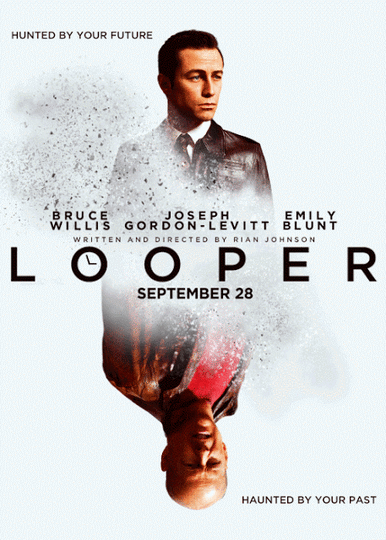
Watched this one with my old Out of Theaters compadre Billy. It's a great science fiction movie, not because it patches up all the holes in time travel (it gleefully expands some of them, in fact), but because it adds a real emotional element, examining what encountering your future self might really feel like, especially if your future self wants to do something that your current self is completely opposed to. Also, bonus points for taking a high-tech urban sci-fi thriller and turning it into a rural drama about halfway through. And though the entire cast is strong, especially Joseph Gordon Levitt and Emily Blunt, special credit goes to young Pierce Gagnon, who plays my favorite kid in several years' worth of movies.

Crazy 1973 action movie I've been hearing about ever since I bought my first "Psychotronic Encyclopedia of Film" back in the mid 1980s but somehow never managed to catch until the fine folks at TCM aired it very late one night. The death penalty's been outlawed, so California ships all its convicted murderers off to a small (but lush) island off its coast, where they're forced to fend for themselves. This being 1973, it means most of the murderers are distinctly camera-friendly, from hunky (and innocent) doctor Tom Selleck to busty (but not innocent) bad girl Phyllis Davis, who appeared in Russ Meyer's "Beyond the Valley of the Dolls" and every TV show of the 1970s. Just like "Survivor" years later, tribes form, alliances are made (and betrayed) and only by teaming up can the relatively good criminals defeat the bad badguys. It's not exactly grim and gritty with the California sun giving everything a healthy glow, and the prisoners look surprisingly clean and well-kept despite living in the wilderness. But it does have that unnerving mix of sex, violence and casual racism that early '70s movies often showcase, and it's surprisingly fast-paced and entertaining all the way through. Plus, as a bonus, the cast includes Roger E. Mosley, which means that, along with Selleck, it's like a sneak peek of "Magnum, P.I." seven years before it aired.

I'm a huge fan of "The Lego Movie" (I think, for one thing, it's much better than any of the new "Star Wars" movies by a long shot), so naturally I was pretty jazzed to see an extended take on Will Arnett's Batman character. And, thankfully, I wasn't disappointed. It lacks the reality-bending ending of "The Lego Movie," but otherwise it's almost as much fun, with nonstop jokes and references for the Batman fans in the audience. (One hilarious sequence references every single previous Batman film in Lego form, then slips in a live-action clip from the 1966 "Batman" movie. Plus, just like in "The Lego Movie," the scope is widened to include villains from other streams of pop culture, including Daleks, King Kong, Jaws, Voldemort and even the Eye of Sauron. And, as a bonus, it has a better handle on the Joker-Batman relationship than any other Batman movie, treating it as the love story (or hate story) it really is.

Another film in the massive W.C. Fields set Santy Claus brought me for Christmas. I wouldn't quite it put at the level of "The Bank Dick" (my favorite Fields movie and, frankly, one of my favorite movies of all time), but it's a brilliant bit of comedy nonetheless, wringing some great laughs from the sheer frustrating hell that is Harold Bissonette's life. The unstoppable destruction of his grocery story is classic, but my favorite part involves his desperate attempts to catch a few winks on his porch that are foiled by various visitors, fate and seemingly God himself. And, like I've mentioned before on this blog, I love how his nightmarish wife accuses him of sharing "ribald stories" with the insurance man who is looking (at 4:30 in the morning!) for Carl LaFong. ("Captial L, small a, capital F, small o, small n, small g....")

Watched this one with my old Out of Theaters compadre Billy. It's a great science fiction movie, not because it patches up all the holes in time travel (it gleefully expands some of them, in fact), but because it adds a real emotional element, examining what encountering your future self might really feel like, especially if your future self wants to do something that your current self is completely opposed to. Also, bonus points for taking a high-tech urban sci-fi thriller and turning it into a rural drama about halfway through. And though the entire cast is strong, especially Joseph Gordon Levitt and Emily Blunt, special credit goes to young Pierce Gagnon, who plays my favorite kid in several years' worth of movies.
Published on March 04, 2017 18:24
February 24, 2017
Movies I watched in January, Part 3
Here goes the final chapter of the first month of 2017. Three movies, all pretty good, one pretty creepy...
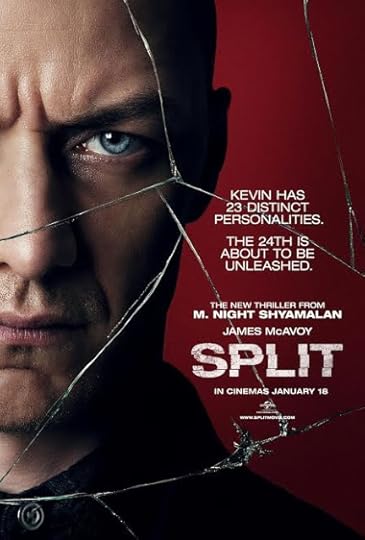
The trailer for this M. Night Shyamalan thriller looked cheesy as hell, and thankfully, that’s what the movie is – high-grade cheese handled with smarts, style and imagination. Things get started quickly as high school loner Anya Taylor-Joy (star of “The Witch,” a movie I loved) and her two more popular pals are kidnapped by James McAvoy, a very dangerous man with a dozen or so personalities running around in his head. Some of those personalities are friendlier (or at least more naïve) than others, and Taylor-Joy, no stranger to the dark side of life, does her best to keep the girls alive while McAvoy’s plans for something very scary-sounding slowly but surely lurch toward fruition. I don’t want to reveal too much here, mostly because the fun in “Split” comes from seeing how crazy Shyamalan is willing to get (and, slight spoiler, he’s willing to get surprisingly crazy), but this is definitely a return to form for the once-acclaimed writer/director, right up there with “The Sixth Sense,” “Unbreakable” and “Signs” as far as taking an outrageous concept and really milking it for all it's worth. McAvoy is excellent (and obviously having a ball) as the badguy, and Taylor-Joy is great as a sort of last girl trying to outwit a seemingly unbeatable villain. And yes, there is a twist, but it’s not really connected to the plot. It’s connected to something else, something very promising – but I wouldn’t think of spoiling it here. See it for yourself.
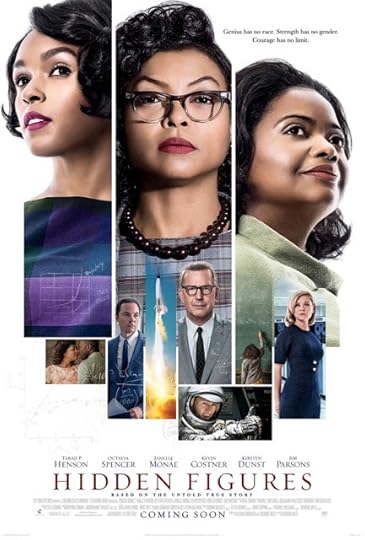
I thought I knew all about the early days of the U.S. space program, but I have to admit, my repeated viewings (and re-readings) of “The Right Stuff” didn’t tell me anything about Katherine Johnson, Dorothy Vaughan and Mary Jackson, three African-American woman (among many others, apparently) who contributed a great deal to getting the Mercury, Gemini and Apollo missions up and running. “Hidden Figures” (nice title, by the way) does a solid job of telling their stories with what I suspect is a heaping helping of Hollywood gloss. I’m guessing, for example, that Kevin Costner’s character, even if he weren’t a fictional amalgam of several different guys, never really smashed the “Whites Only” sign on the ladies restroom so Johnson could finally use a facility that didn’t require her to walk a mile from her office. Still, corny or not, it’s consistently entertaining, and though I don’t know if “Hidden Figures” deserves a Best Picture nomination, it’s the sort of empowering, informative movie that was obviously going to get one. The cast is top-notch, with Taraji P. Henson, Octavia Spencer and Janelle Monae in the three lead roles (Spencer is especially good in the least showy part) and strong support from Costner, Mahershala Ali (nominated for “Moonlight”), Kirsten Dunst and Glen Powell as nice-guy John Glenn. Definitely worth a watch, and be sure to stick around for the coda, which reveals how much Johnson, Vaughan and Jackson accomplished over the course of their lives.
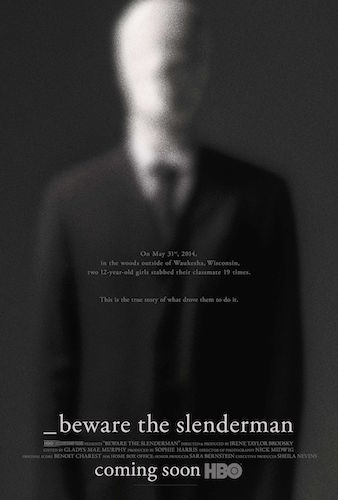
Amy and I sat down to watch this HBO documentary figuring it would be interesting and maybe a little unnerving, but we had no idea just how unnerving it would be – and for a reason we didn't suspect. "Beware the Slenderman" tells the story of two seemingly normal 12-year-old girls who, in the spring of 2014, stabbed a classmate 19 times because they thought it would win the favor of an online bogeyman known as “Slenderman.” An urban legend born of online tales and photoshopped images, Slenderman is something of an underground phenomenon, the sort of spooky thing kids latch onto when they hit that tender age when they realize the world can be, in fact, a frightening place, and one way to cope with that disturbing fact is to claim something frightening (and often fictional) as your own. I remember latching onto gory horror movies, Dungeons & Dragons and Stephen King novels when I was hitting my early teen years. “Beware the Slenderman,” which features heartbreaking interviews with the parents of the girls and footage of the girls themselves (the victim survived, but isn’t interviewed), gets under your skin – or at least it got under ours – making you wonder how that sort of dark curiosity has changed in the world of online media, when anything is accessible at any time. I know while Amy and I watched it in the comfort of our living room, we were thinking of our own pre-teen girl asleep down the hall in her bedroom. She's a smart, curious kid who, among other things, loves “Five Nights at Freddy’s” and “Undertales” and other creepy entertainment that, to be honest, we don’t know that much about. And that, my friends, is scary.

The trailer for this M. Night Shyamalan thriller looked cheesy as hell, and thankfully, that’s what the movie is – high-grade cheese handled with smarts, style and imagination. Things get started quickly as high school loner Anya Taylor-Joy (star of “The Witch,” a movie I loved) and her two more popular pals are kidnapped by James McAvoy, a very dangerous man with a dozen or so personalities running around in his head. Some of those personalities are friendlier (or at least more naïve) than others, and Taylor-Joy, no stranger to the dark side of life, does her best to keep the girls alive while McAvoy’s plans for something very scary-sounding slowly but surely lurch toward fruition. I don’t want to reveal too much here, mostly because the fun in “Split” comes from seeing how crazy Shyamalan is willing to get (and, slight spoiler, he’s willing to get surprisingly crazy), but this is definitely a return to form for the once-acclaimed writer/director, right up there with “The Sixth Sense,” “Unbreakable” and “Signs” as far as taking an outrageous concept and really milking it for all it's worth. McAvoy is excellent (and obviously having a ball) as the badguy, and Taylor-Joy is great as a sort of last girl trying to outwit a seemingly unbeatable villain. And yes, there is a twist, but it’s not really connected to the plot. It’s connected to something else, something very promising – but I wouldn’t think of spoiling it here. See it for yourself.

I thought I knew all about the early days of the U.S. space program, but I have to admit, my repeated viewings (and re-readings) of “The Right Stuff” didn’t tell me anything about Katherine Johnson, Dorothy Vaughan and Mary Jackson, three African-American woman (among many others, apparently) who contributed a great deal to getting the Mercury, Gemini and Apollo missions up and running. “Hidden Figures” (nice title, by the way) does a solid job of telling their stories with what I suspect is a heaping helping of Hollywood gloss. I’m guessing, for example, that Kevin Costner’s character, even if he weren’t a fictional amalgam of several different guys, never really smashed the “Whites Only” sign on the ladies restroom so Johnson could finally use a facility that didn’t require her to walk a mile from her office. Still, corny or not, it’s consistently entertaining, and though I don’t know if “Hidden Figures” deserves a Best Picture nomination, it’s the sort of empowering, informative movie that was obviously going to get one. The cast is top-notch, with Taraji P. Henson, Octavia Spencer and Janelle Monae in the three lead roles (Spencer is especially good in the least showy part) and strong support from Costner, Mahershala Ali (nominated for “Moonlight”), Kirsten Dunst and Glen Powell as nice-guy John Glenn. Definitely worth a watch, and be sure to stick around for the coda, which reveals how much Johnson, Vaughan and Jackson accomplished over the course of their lives.

Amy and I sat down to watch this HBO documentary figuring it would be interesting and maybe a little unnerving, but we had no idea just how unnerving it would be – and for a reason we didn't suspect. "Beware the Slenderman" tells the story of two seemingly normal 12-year-old girls who, in the spring of 2014, stabbed a classmate 19 times because they thought it would win the favor of an online bogeyman known as “Slenderman.” An urban legend born of online tales and photoshopped images, Slenderman is something of an underground phenomenon, the sort of spooky thing kids latch onto when they hit that tender age when they realize the world can be, in fact, a frightening place, and one way to cope with that disturbing fact is to claim something frightening (and often fictional) as your own. I remember latching onto gory horror movies, Dungeons & Dragons and Stephen King novels when I was hitting my early teen years. “Beware the Slenderman,” which features heartbreaking interviews with the parents of the girls and footage of the girls themselves (the victim survived, but isn’t interviewed), gets under your skin – or at least it got under ours – making you wonder how that sort of dark curiosity has changed in the world of online media, when anything is accessible at any time. I know while Amy and I watched it in the comfort of our living room, we were thinking of our own pre-teen girl asleep down the hall in her bedroom. She's a smart, curious kid who, among other things, loves “Five Nights at Freddy’s” and “Undertales” and other creepy entertainment that, to be honest, we don’t know that much about. And that, my friends, is scary.
Published on February 24, 2017 17:06
Will Pfeifer's Blog
- Will Pfeifer's profile
- 23 followers
Will Pfeifer isn't a Goodreads Author
(yet),
but they
do have a blog,
so here are some recent posts imported from
their feed.



